Curbs on Rice Exports (The Hindu)
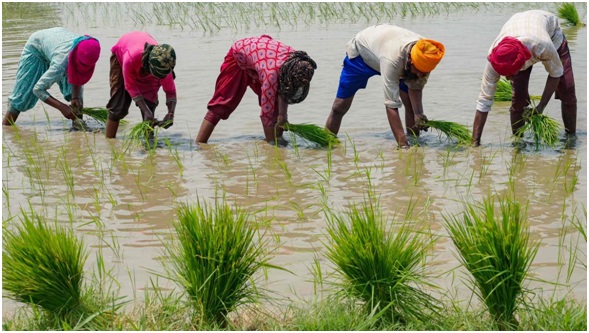
- 31 Aug 2023
Why in the News?
In a move to check domestic rice prices and ensure domestic food security, the Indian government has prohibited the export of white rice, levied a 20% export duty on par-boiled rice till October 15, and permitted the export of Basmati rice for contracts with value of $1,200 a tonne or above.
India's Rice Exports:
- India is the biggest rice seller in the whole world, making up 45% of the global rice market.
- In the months of April and May in 2023, the amount of rice sent out of the country was 21.1% more compared to the same time in the previous financial year.
- Just in May, the export of Basmati rice was 10.86% higher than how much was exported in May of 2022.
- The amount of non-Basmati rice being shipped out has been increasing for three years, and in the year 2022-2023, more Basmati rice was exported than the year before.
- According to the information the government provided, until August 17 this year, the total rice exports (not including broken rice) were 15% more, reaching 7.3 million tonnes.
- This is compared to 6.3 million tonnes during the same time last year.
- Thailand thinks it will produce almost 25% less rice in 2023-2024; Myanmar has stopped sending out raw rice; and it seems like there might be less rice available in Iraq and Iran too.
Rice Production in Current Season:
- The Department of Agriculture and Farmers Welfare has reported that during the Rabi season of 2022-2023, the amount of rice produced was 13.8% lower, reaching 158.95 lakh tonnes.
- This is compared to 184.71 lakh tonnes in the Rabi season of 2021-2022.
- For the Kharif season, the data about planting shows that rice has been planted on 384.05 lakh hectares this year as of August 25.
- This is more compared to 367.83 lakh hectares during the same time last year.
- People in the trading and rice milling business are saying that the new season's rice will start arriving after the first week of September.
- They also mentioned that the effects of El Nino might have some impact on how much rice arrives.
- Rice prices were ?27 per kilogram at this time last year, but now they've gone up to ?33 per kilogram.
Challenges in India’s Rice Export Strategy:
- India managed to export a record-breaking 21 million metric tonnes (MMT) of rice in the fiscal year 2021-22 (FY22), which made up around 41 percent of the global exports in a market of about 51.3 MMT.
- Exporting such large amounts of rice led to a drop in global rice prices by approximately 23 percent in March (compared to the previous year), while other cereal prices like wheat and maize were increasing significantly in the global market. In fact, in FY22, the price for each tonne of common rice exported was only $354, which was lower than the Minimum Support Price (MSP) for rice.
- Buying below MSP or issues with distribution which means that either rice exporters were buying rice (paddy) from farmers and millers at prices below the MSP, or a significant portion of rice provided for free under the PM Garib Kalyan Ann Yojana (PMGKAY) was being sent for export at prices below the MSP.
- Certain states, particularly Punjab, provide free electricity for irrigation, and highly subsidized fertilizers, especially urea, which gives Indian rice an artificial competitive edge in global markets.
What Can Indian Farmers and Consumers Anticipate?
- The government has raised the Minimum Support Price (MSP) for rice, and rice millers are now buying paddy at a price higher than the MSP.
- Because of this, farmers can expect that prices won't go down.
- Limits on exports will make sure that rice prices in the market don't suddenly go up by a lot.
- For people in India who are buying rice, there's a small increase in prices right now, but over time, there will still be enough rice available and prices aren't predicted to go way up.
Actions Taken by the Central Government:
- To control the prices of rice in the country and make sure there's enough food for people here, the Union government has stopped exporting regular (non-basmati) white rice.
- They have also put a 20% tax on exporting partially cooked rice until October 15.
- For Basmati rice, the government says it can be exported if the contract's value is $1,200 per tonne or more.
- Since last September, exporting broken rice has not been allowed.
- However, in some cases, the government can allow exporting broken rice if other countries need it for their food security and if their government asks for it.
Opinions of Rice Exporters:
- Indian par-boiled rice is still competitively priced in the global market, even with the 20% duty added.
- When the world rice market is strong, it can handle higher prices as well. Overall, there's a lot of demand from other countries.
- Countries like Indonesia, which usually sell rice, are now buying (raw rice) from other places.
- According to rice exporters, instead of dividing rice into Basmati and non-Basmati, the government should think about categorizing it as regular rice and special rice for making export decisions.
- Around 12 types of rice have something called Geographical Indication (GI) recognition, and these should be kept separate from general market rules.
- For Basmati rice, the government could have let exports continue or set a minimum value for exports at $900 per tonne.
- Basmati rice is unique, and there will be new rice arriving soon, so there's no real need for restrictions.
- Since Indian rice quality is good and supply is steady, other countries will want it even more in the future.
India's G20 Presidency and Financing the green transition (Indian Express)
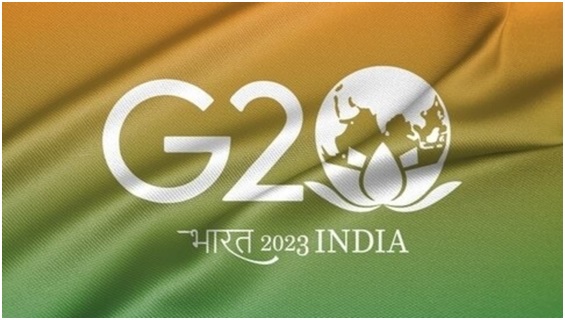
- 30 Aug 2023
Why in the News?
With India gearing up to host the G20 summit on September 9 and 10, the focal points of extensive discussions are expected to revolve around climate change and its financial aspects. The current pledges from developed nations, particularly concerning climate financing mechanisms, fall short in effectively addressing the challenges posed by climate change.
What is Climate Finance?
- Climate finance encompasses funding at the local, national, or transnational levels.
- The UNFCCC, the Kyoto Protocol, and the Paris Agreement emphasize the need for financial support from wealthier Parties to aid those with fewer resources and greater vulnerability.
- This acknowledgment is rooted in the understanding that countries' contributions to and capabilities for addressing climate change differ widely.
- Mitigation efforts demand substantial investments for significant emission reductions.
- Equally, adaptation efforts rely on substantial financial resources to counter the adverse effects and mitigate the impacts of a shifting climate.
Challenges with the Current Framework of Climate Financing:
Inadequacy of the $100 Billion Target
- During COP15 in 2009 (Copenhagen, Denmark), developed nations collectively committed to mobilize $100 billion annually by 2020 to support climate initiatives in developing countries.
- However, the basis for this figure, established over a decade ago, lacks rationale and logic.
- Even at its inception, the estimated amount was insufficient to meet the actual requirements, leading to ongoing debates about its adequacy.
- Moreover, the developing world has consistently raised concerns that the promised $100 billion annually is not being delivered by developed nations.
- Today, to meet the objectives of the Paris Agreement, the demand for climate finance stands at approximately $4.35 trillion.
- Actual expenditure remains just a fraction of this, around one-seventh of the needed sum.
Inclusion of Commercial Loans as Grants
- Developed nations (OECD) claim to have provided nearly $80 billion to developing nations as climate finance in 2020.
- However, the actual financial transfers amount to only $19-22 billion.
- This discrepancy arises from the developed world including regular commercial debt related to climate activities in their calculations.
- This approach reveals an evasion of responsibility, as the committed $100 billion is intended to be in the form of concessional finance or grants, not loans.
Challenges in Financing Adaptation vs. Mitigation
- Climate finance is comprised of two main categories: mitigation and adaptation.
- A significant majority (93 percent) of funds directed toward climate finance are channeled into mitigation projects, with an understandable rationale.
- Mitigation initiatives often generate revenue streams and are perceived as financially viable, making them conducive to loans under standard market conditions.
- In contrast, adaptation projects entail substantial initial expenses, prolonged timeframes, and a lack of predictable income sources.
- This makes them appear risky to financial institutions, resulting in limited funding availability.
Limited Progress in Grant Provision
- Despite the recurrent commitment to deliver $100 billion annually, little tangible progress has been achieved.
- Even during recent Conferences of Parties (CoP), this promise is reiterated, yet real-world advancements remain limited.
- In the most recent CoP (CoP27 in Sharm El-Sheikh, Egypt), an agreement was reached to establish a loss and damage fund.
- However, the fund's specifics and quantum will be finalized later.
- This fund is intended to address immediate challenges like rising sea levels and desertification.
- Considering historical trends in concessional finance, substantial outcomes from this proposed fund are unlikely in the near future.
- Furthermore, there is ambiguity regarding whether countries like India will be eligible to receive assistance or provide it.
Strides Toward Fulfilling Climate Finance Objectives:
- Global Financing Pact 2023
- In June 2023, the French President orchestrated a summit aimed at funding climate change mitigation (as well as poverty reduction) in the Global South.
- During this Summit, it was declared that an additional lending capacity of USD 200 billion would be made accessible to emerging economies.
- Moreover, the Summit signaled the imminent achievement of the long-anticipated USD 100 billion climate finance target within the current year.
- Integration of Disaster Clauses:
- To address the impacts of extreme weather occurrences, the World Bank introduced disaster clauses.
- These clauses allow for the suspension of debt payments during such events, providing relief to affected nations.
- Investment in Special Drawing Rights (SDRs):
- The IMF unveiled a commitment to allocate USD 100 billion in Special Drawing Rights (SDRs) to support vulnerable nations.
- However, certain SDR allocations are pending approval from the US Congress.
Way Forward for India and Other Developing Nations Amidst Limited Support from Developed Countries:
- Resource Mobilization for Climate Finance:
- In the face of the inadequacies in support from developed nations, countries like India must now turn inwards and strategically mobilize resources for climate finance.
- This endeavor calls for collaborative efforts among various institutions that can complement each other's strengths.
- Financial organizations will need to invest in mature technologies, such as wind and solar, which are commercially viable.
- Investing in Advanced Technologies:
- For technologies not yet ready for widespread commercial viability, governments must play a pivotal role.
- For instance, direct financial backing is essential for the adoption of electrolysers in nascent areas like green hydrogen.
- Currently, the cost of electrolysers poses a barrier, and scaling up through substantial orders can trigger cost reductions through economies of scale.
- Private Sector Engagement in Adaptation Projects:
- Regarding adaptation initiatives, involving the private sector is crucial, necessitating government intervention to facilitate collaboration.
- Globally, most adaptation funding originates from multilateral development banks in the form of loans.
- However, private sector participation in adaptation projects remains below 2 percent.
- This imbalance arises from the private sector's perception of adaptation projects as high-risk ventures, given the limited incentives available for such engagements.
- If governments co-finance adaptation projects with the private sector, it could mitigate risks and attract private sector participation.
Securing Additional Resources
- To enable government involvement in these endeavors, additional resources will be indispensable. Possible avenues include imposing carbon taxes, issuing green bonds, and exploring catastrophe (CAT) bonds, among other innovative mechanisms.
When it comes to climate finance, countries must primarily look within, given the apparent lack of full commitment from the developed world to provide necessary assistance.
This holds special importance for nations like India, particularly as they might not qualify for concessional financing. As a result, these countries need to prioritize self-reliance and innovative strategies to address the challenges of climate change.
Mains Question:
- How can developing countries like India address climate finance challenges in the face of limited commitment from developed nations? Discuss strategies for effective funding and the role of self-reliance. (15M)
Aditya-L1 (Indian Express)

- 29 Aug 2023
Why in the News?
The Aditya-L1 mission will launch on September 2 from Sriharikota, according to ISRO. The first Indian observatory in space, Aditya L1, will study the Sun.
What is the Aditya-L1 Mission?
Aditya, which in Sanskrit means "Sun," is a coronagraphy spacecraft that is intended to research the solar atmosphere, or solar corona, which is its outermost region. It was created by ISRO and several other Indian scientific organizations. It will be launched on a PSLV-XL launch vehicle and is the first specifically designed Indian mission to view the Sun.
Objectives of Aditya-L1 Mission:
- The Aditya L1 payloads' suits are anticipated to deliver vital data for comprehending the phenomenon of:
- The dynamics of space weather, particle and field propagation.
- Coronal mass ejection (CME), pre-flare and flare activities and their features, etc.
- The position of the spacecraft:
- The spacecraft will be positioned in a halo orbit around the Sun-Earth system's Lagrange point 1 (L1), according to ISRO.
- The main benefit of having a satellite in the halo orbit around the L1 point is being able to continuously see the Sun without any occultation or eclipses.
- This will provide us a better opportunity to watch the solar activity and how it affects the space weather in real time.
- 1.5 million kilometers separate L1 from the planet. The spacecraft is anticipated to take more than 120 days to arrive to L1.
- Study conducted by Aditya L1
- The photosphere, the lowest layer of the sun that we can see directly, the chromosphere, the layer 400–2,100 km above the photosphere, and the outermost layers of the sun (the corona), are the three layers that the spacecraft is equipped to observe.
- The remaining three playloads will examine particles and fields in situ at the Lagrange point L1, while the final four playloads will directly research the Sun.
- Remote sensing payloads that will study the sun include:
- The Visible Emission Line Coronagraph (VELC) for corona/imaging and spectroscopy and CME;
- The Solar Ultraviolet Imaging Telescope (SUIT) for photosphere and chromosphere imaging;
- The Solar Low Energy X-ray Spectrometer (SoLEXS), a soft X-ray spectrometer for Sun-as-a-star observation; and
- The High Energy L1 Orbit
- The payloads used to study the L1 in situ Aditya Solar Wind Particle Experiment (ASPEX) for solar wind/particle analyzer protons and heavier ions with directions;
- Plasma Analyser Package For Aditya (PAPA) for solar wind/particle analyzer electrons and heavier ions with directions; and
- Advanced Tri-axial High Resolution Digital Magnetometers for in situ magnetic field study.
Why is it necessary to study the Sun?
- Every planet, including Earth and the exoplanets outside the Solar System, evolves — and the parent star governs this evolution.
- The weather of the entire system is influenced by the solar weather and environment.
- Variations in this weather can cause satellites' orbits to shift or their lives to be cut short, interfere with or damage onboard electronics, and cause power outages and other disruptions on Earth.
- Understanding space weather requires knowledge of solar occurrences.
- Continuous solar observations are required to learn about, track, and anticipate the impact of Earth-directed storms.
- Every storm that forms in the Sun and travels to Earth passes through L1.
What is the first Lagrange point?
- A Lagrange point is a place in space where the gravitational attraction of two enormous masses exactly equals the centripetal force necessary to move with them.
- That is, at that moment, the gravitational attraction and repulsion between two celestial entities is such that an object put between them effectively stays in the same relative position while travelling with them.
- These spots in space can be employed by spacecraft to lower the amount of fuel required to stay in position.
- The five Lagrange points are named after the Italian-French mathematician Josephy-Louis Lagrange: L1, L2, L3, L4, and L5.
- The Earth-Sun system's L1 point provides an unobstructed view of the Sun.
- The Solar and Heliospheric Observatory Satellite SOHO is currently based there.
- The James Webb Space Telescope of NASA is at L2.
Other Solar Missions by Different Countries:
- United States
- Parker Solar Probe (August 2018): Touched the Sun’s upper atmosphere, sampled particles and magnetic fields in December 2021
- Solar Orbiter (February 2020): Explores the Sun’s changing space environment
- Europe
- Ulysses (October 1990): Studied space environment above and below the Sun’s poles
- Proba-2 (October 2001): Part of solar exploratory missions.
- Upcoming: Proba-3 (2024), Smile (2025)
- China
- Advanced Space-based Solar Observatory (ASO-S, October 2022): Launched to observe the Sun.
- Japan
- Hinotori (ASTRO-A, 1981): Studied solar flares using hard X-rays
- Yohkoh (SOLAR-A, 1991): Studied solar activity
- Hinode (SOLAR-B, 2006): Studied the Sun’s impact on Earth.
India and the Asian Development Bank to establish a climate change and health hub in Delhi (The Hindu)
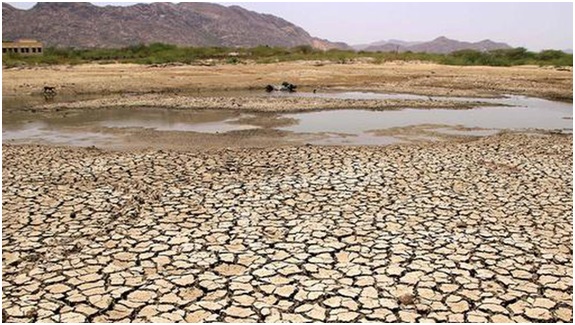
- 28 Aug 2023
Why in the News?
India's G-20 document states that the climate change and health hub will facilitate knowledge sharing, partnerships, and innovations to assist developing countries, while health systems will face challenges from infectious diseases and natural disasters driven by climate change.
Why in the news?
- India, in collaboration with the Asian Development Bank (ADB), is gearing up to inaugurate a climate change and health hub in the national capital.
- This initiative follows India's earlier achievement in hosting the inaugural WHO Centre for Global Traditional Medicine, located in Jamnagar, Gujarat.
- The forthcoming hub's mission is to foster knowledge exchange, cultivate partnerships, drive innovations, and extend support to nations beyond the G-20, with a special focus on developing countries.
The Significance of the Climate Change and Health Hub:
- Fostering Collaboration: This center holds paramount significance as it brings together diverse partners to engage in vital discussions regarding the far-reaching impacts of climate change.
- It provides a unique platform for shared learning and collaboration among stakeholders.
- Addressing Health Emergencies: India's recent G-20 outcome document highlights that climate change remains a key driver of health emergencies, including the resurgence of infectious diseases.
- Moreover, it exacerbates the frequency and severity of natural disasters, posing a significant threat to the capability of health systems to provide essential services.
- Boosting Resilience: Given this backdrop, it is imperative to bolster the resilience of health systems against the adverse effects of climate change.
- The G-20 outcome document outlines a commitment to prioritize the development of climate-resilient health systems, establish sustainable and eco-friendly healthcare supply chains, mobilize resources for resilient, low-carbon health systems, and promote collaboration through initiatives like the WHO-led Alliance for Transformative Action on Climate and Health (ATACH).
- Tackling Zoonotic Spillovers: The recent G-20 Health Ministers' meeting expressed concern about the rising incidence of zoonotic spillovers, leading to the emergence of new diseases.
- In this context, there is an urgent need to identify both new and existing drivers using a scientific and risk-based approach while reinforcing existing infectious disease surveillance systems.
- Global Impact: Situated in New Delhi, the Climate Change and Health Hub is poised to address these pressing issues on a global scale, serving as a hub for international collaboration and solutions.
About Asian Development Bank (ADB):
- Founded in 1966, the Asian Development Bank (ADB) is a multilateral institution that counts 68 members among its ownership, with 49 hailing from the Asian and Pacific region.
- ADB is unwavering in its commitment to fostering a prosperous, inclusive, resilient, and sustainable future for Asia and the Pacific, all while maintaining its steadfast resolve to eliminate extreme poverty.
- To achieve its noble objectives, ADB extends its support to member nations and partners through a comprehensive suite of financial instruments.
- This includes loans, technical assistance, grants, and equity investments, all aimed at catalyzing social and economic development across the region.
- In essence, ADB stands as a stalwart advocate for advancing social and economic development in Asia and the Pacific.
- As of December 31, 2019, ADB's five largest shareholders are Japan and the United States, each possessing 15.6% of total shares, followed by the People's Republic of China (6.4%), India (6.3%), and Australia (5.8%). The institution's headquarters are situated in Manila, Philippines.
About WHO Global Centre for Traditional Medicine (GCTM):
- The WHO Global Centre for Traditional Medicine (GCTM) is a pioneering knowledge hub dedicated to traditional medicine, recognized as the world's premier center of its kind.
- Situated in Jamnagar, Gujarat, it represents a remarkable collaboration between nations.
- India, as the primary investor in GCTM, has committed an approximate sum of US$ 250 million to facilitate the center's establishment, infrastructure development, and operational activities.
The GCTM is designed to achieve five key objectives:
- Archiving Traditional Wisdom: GCTM seeks to harness technology to construct a comprehensive database of traditional knowledge systems.
- Setting International Standards: It aspires to establish global standards for the testing and certification of traditional medicines, enhancing confidence in these age-old remedies.
- Global Knowledge Exchange: The center aims to serve as a global platform where experts in traditional medicine converge to share their experiences and expertise.
- Funding Research: GCTM endeavors to mobilize resources and funding for research in the field of traditional medicines, fostering innovation and scientific exploration.
- Holistic Healing Protocols: The center is dedicated to developing holistic treatment protocols for specific diseases, enabling patients to benefit from the complementary strengths of both traditional and modern medicine approaches.
National Medical Commission Delays Exclusive Generic Medicine Prescriptions (Indian Express)

- 26 Aug 2023
Why in the News?
The National Medical Commission (NMC) on Thursday put on hold its new guidelines that made it mandatory for doctors to only prescribe generic drugs.
What’s in the News?
- Amid criticism from the Indian Medical Association (IMA) and the Indian Pharmaceutical Alliance (IPA), the National Medical Commission has suspended the Medical Practitioner (Professional Conduct) Regulations, 2023.
- The Central Drugs Standard Control Organization (CDSCO), India's top drug regulator, also raised concerns about the language used in the notification.
- Stakeholder groups recommended that the guidelines be postponed until the implementation of WHO's good manufacturing practices.
- It was argued that exclusive generic drug prescriptions might lead pharmacies to sell generics with significant profit margins, potentially discouraging quality branded generic manufacturers.
Overview of the Medical Practitioner (Professional Conduct) Regulations, 2023:
- Released on August 2nd, the National Medical Commission introduced the Medical Practitioner (Professional Conduct) Regulations, 2023, aimed at reforming prescription practices.
- These regulations made it compulsory for registered medical practitioners to prescribe medications using terms like 'generic,' 'non-proprietary,' or 'pharmacological' names.
- According to these guidelines, a generic drug is defined as a product comparable to the brand/reference listed product in terms of dosage form, strength, route of administration, quality, performance characteristics, and intended use.
- Additionally, they described branded generic drugs as those that have gone off-patent are manufactured by various companies, and sold under different brand names.
- The guidelines emphasized that every Registered Medical Practitioner (RMP) should legibly prescribe drugs using generic names, promoting rational prescription practices by avoiding unnecessary medications and irrational fixed-dose combination tablets.
- The regulations also outlined punitive measures for those who breach these directives.
- Beyond generic drug prescribing, the NMC guidelines covered a wide range of issues, including continuing medical education, the use of social media platforms, and the maintenance of a dynamic register of doctors.
- They also prohibited doctors from participating in events sponsored by pharmaceutical companies.
- However, these NMC guidelines faced opposition from the Indian Medical Association (IMA).
Concerns Raised by the Indian Medical Association (IMA):
- In response to the regulations introduced by the NMC, the IMA released a statement outlining its concerns.
- The IMA highlights the primary obstacle to the adoption of generic drugs as the uncertainty surrounding their quality.
- They emphasize that the nation's quality control standards are significantly lacking, making it practically impossible to guarantee the quality of drugs. Prescribing drugs without assured quality, they argue, could jeopardize patient health.
- The statement further points out that less than 0.1% of drugs manufactured in India undergo quality testing.
- The IMA suggests that this step should be postponed until the government can ensure the quality of all drugs released into the market.
- Their statement firmly asserts that patient care and safety must not be compromised.
- The IMA has long advocated for the availability of only high-quality drugs in the country, with uniform and affordable pricing.
- They call upon the government to implement a 'one drug, one quality, one price' system, in which all brands are either sold at the same price or banned, allowing only generics while ensuring the highest quality of these drugs.
About National Medical Commission:
- The National Medical Commission (NMC) is a statutory institution established under the National Medical Commission Act of 2019.
- It succeeded the previously existing Medical Council of India (MCI), which had been in operation since 1934.
NMC's Key Objectives:
- Enhance accessibility to quality and affordable medical education.
- Ensure the availability of sufficient and high-quality medical professionals throughout the country.
- Promote equitable and comprehensive healthcare with a focus on community health and universal access to medical services for all citizens.
- Encourage medical professionals to integrate the latest medical research into their practice and contribute to ongoing research.
- Conduct transparent periodic assessments of medical institutions.
- Maintain a comprehensive medical register for India.
- Uphold rigorous ethical standards across all facets of medical services.
- Establish an effective grievance redressal mechanism.
NMC Composition:
- The NMC comprises 25 members, the majority of whom are nominated by the Central government.
- The tenure of NMC members is four years, except for part-time members, who serve for two years.
- Eleven part-time members represent states or state medical councils.
- Notably, NMC chairpersons and other members appointed by the Central government cannot be reappointed.
- Decisions within the Commission require approval from the majority, with a minimum of 13 out of 25 members' agreement.
BRICS Summit 2023 (The Hindu)
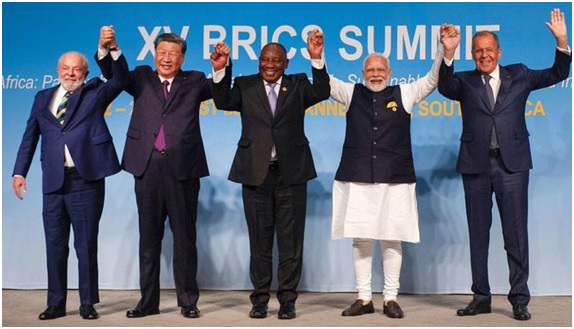
- 25 Aug 2023
Why in the News?
The 15th BRICS summit convened at the Sandton Convention Centre in South Africa from August 22nd to 24th. One of the significant outcomes of this summit was the unanimous agreement among BRICS leaders to broaden the group's membership by welcoming six new countries.
What are the Key Highlights of the Summit?
At the 15th BRICS Summit hosted in South Africa, the alliance extended invitations to six nations, marking a significant development that reinforces BRICS' position as a prominent 'voice of the Global South.' These new members, namely Iran, the United Arab Emirates, Saudi Arabia, Argentina, Egypt, and Ethiopia, are set to formally commence their participation in BRICS starting January 2024.
- Host: South Africa played host to this year's summit, taking on the role of Chair for BRICS since January 1, 2023.
- Theme: The overarching theme for the summit was "BRICS and Africa: Partnership for Mutually Accelerated Growth, Sustainable Development, and Inclusive Multilateralism."
- Five Priorities for 2023:
- The member nations focused on five key priorities:
- Advancing a partnership for a fair Just Transition.
- Revolutionizing education and skills development for the future.
- Exploiting opportunities through the African Continental Free Trade Area.
- Bolstering socio-economic recovery after the pandemic and working towards achieving the 2030 Agenda on Sustainable Development.
- Reinforcing multilateralism, which includes pursuing substantial reforms of global governance institutions and empowering women's meaningful participation in peace processes.
- Outcome Document: After the summit, member countries collectively adopted the Johannesburg II Declaration, which outlined their commitment to working on the following themes:
- Building a Partnership for Inclusive Multilateralism.
- Cultivating an Environment of Peace and Development.
- Fostering a Partnership for Mutually Accelerated Growth.
- Nurturing a Partnership for Sustainable Development.
- Deepening People-to-People Exchanges.
- Enhancing Institutional Development.
Significance of this Development:
- Amplified Advocate for Developing Nations: The inclusion of new member states bolsters BRICS' role as a prominent spokesperson for the interests of the developing world.
- Enhanced Global Influence: Currently representing approximately 40% of the global population and over a quarter of the world's GDP, BRICS' significance amplifies with these additions.
- The organization will now encompass nearly half of the world's population and incorporate three of the globe's major oil-producing nations, namely Saudi Arabia, the UAE, and Iran.
- China's Expanding Influence: This expansion also raises questions about China's growing dominance within BRICS, given its pivotal role in driving the group's enlargement.
- Noteworthy Regional Dynamics: The fact that regional rivals, Saudi Arabia and Iran, are both joining BRICS is particularly remarkable.
- China's role as the largest purchaser of Saudi Arabia's oil and its recent mediation in brokering a peace agreement between Tehran and Riyadh adds a distinctive dimension to this development.
The Recent Additions to BRICS:
The inclusion of new members in BRICS marks a noteworthy development in the alliance's composition:
- Iran: The invitation extended to Iran, a nation with strained ties with the West, is perceived as a move with strong backing from China and Russia.
- This signals Iran's strategic alignment with these major players on the global stage.
- Saudi Arabia: Historically, Saudi Arabia has been a staunch ally of the United States.
- However, recent trends suggest the kingdom's growing independence in its foreign policy decisions, and its decision to join BRICS aligns with this shift.
- Russia and Iran: For both Russia and Iran, BRICS membership serves as a diplomatic signal to the Western world, affirming that they maintain global friendships and strategic partnerships beyond Western alliances.
- Egypt and Ethiopia: Despite their longstanding ties with the United States, both Egypt and Ethiopia's involvement in BRICS indicates a diversification of their international partnerships and interests.
- Argentina: Amidst an economic crisis, Argentina's BRICS membership carries the expectation of potential financial assistance from the alliance, reflecting the nation's pursuit of economic stability and cooperation on the global stage.
Rationale for BRICS Expansion:
- Counterbalance to Anti-US Sentiment and Advocacy for Multipolarity: In light of significant anti-US sentiment prevailing worldwide, these countries seek a platform where they can harness this sentiment to unite effectively.
- Moreover, there's a growing demand for multipolarity, a forum through which Global South nations can demonstrate their solidarity.
- Emerging as a Counterweight to Western Hegemony: The conflict in Ukraine has resulted in Western nations coming together while simultaneously reinforcing the China-Russia partnership.
- Consequently, BRICS has evolved into an aspirational bloc capable of challenging the Western geopolitical perspective and serving as a counterweight to Western-dominated forums like the Group of 7 and the World Bank.
What BRICS Expansion Signifies for India's Global Positioning?
- India's recent participation in the G7 summit in Hiroshima and the informal Quad summit, alongside its continued engagement with the BRICS alliance, has sparked discussions about its foreign policy orientation.
- While some perceive these moves as indicative of India aligning more closely with the United States, it's crucial to underscore India's persistent commitment to the BRICS, often viewed as an 'anti-Western' bloc.
- Additionally, India maintains its presence within the Shanghai Cooperation Organisation (SCO) and maintains diplomatic relations with both Russia and China, despite occasional challenges.
- It is important to note that India's perspective on BRICS differs from China's. India sees BRICS as a forum that should remain non-aligned with Western powers, emphasizing its non-Western character.
- Regarding the recent expansion of BRICS to include new members, India views these additions as opportunities for valuable partnerships.
- However, concerns have arisen about the possibility of BRICS becoming more aligned with China's interests, potentially marginalizing India's influence within the group.
- This raises questions about how India will safeguard its voice and interests within BRICS as the alliance evolves.
Chandrayaan-3 Successfully Lands on the Moon (The Hindu)
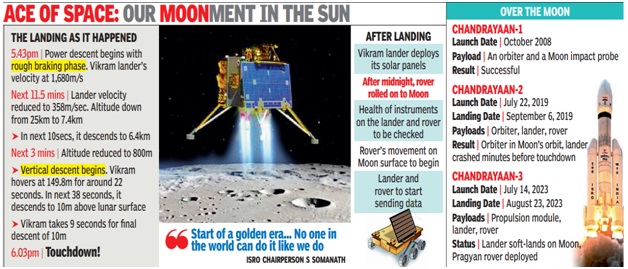
- 24 Aug 2023
Why in the News?
India's Chandrayaan-3 mission made an indelible mark in history with its successful lunar landing. Achieving a 'soft landing' at the Moon's south pole, India now stands as the sole nation to have accomplished this remarkable feat.
Nearly sixty years after the Soviet Union’s Luna 9 mission made history as the first soft landing on the Moon, a lunar landing remains elusive for many countries. Russia’s Luna-25 mission failed earlier this week, in the same year that the Japanese Hakuto mission crash-landed. In 2019, Chandrayaan-2’s crash was preceded by Israel’s Beresheet facing a similar fate.
What is Soft Landing?
- A 'soft landing' refers to the precise and controlled landing of a spacecraft at a gentle speed, ensuring minimal or no damage to the craft.
- This achievement highlights the technical prowess of the spacecraft.
- During a soft landing, the spacecraft executes a sequence of maneuvers and braking procedures aimed at diminishing its velocity and aligning it with the chosen landing area.
- Typically, this involves activating retro-rockets or thrusters to gradually reduce descent speed and maintain a carefully managed approach.
- The ultimate objective is to guide the spacecraft to the surface in a manner that avoids significant damage, showcasing the precision and expertise of the mission.
But why is it so difficult?
- The Moon has an extremely thin atmosphere. This means that spacecraft cannot rely on atmospheric friction to slow down considerably ahead of a landing which means that they will have to rely heavily on their propulsion systems to make a safe landing.
- Also, there is no GPS on the Moon, unlike here on Earth.
- This means that onboard computers will have to make quick calculations and maneuvers to land at a safe location without guidance from a massive network of satellites.
Why is ISRO Aiming for the Southern Pole?
- All of the spacecraft that have landed on the Moon previously have landed in the equatorial region, either a few degrees of latitude north or a few degrees south of the lunar equator.
- NASA’s Surveyor 7 is the mission that went farthest from the equator in history, landing as far away as 50 degrees south of the equator.
- It is not without reason that so many missions land near the equator.
- The terrain and temperature there are more welcoming, making the long and sustained operations of instruments easier.
- Also, the surface there is relatively smooth with very few steep slopes, hills, and craters.
- Due to the difficult environment, the polar regions of the Moon have largely remained unexplored.
- But if the data from many previous orbiter missions is anything to go by, these regions could be very interesting to explore.
- Chandrayaan-1 observed some evidence of the presence of ice molecules in the deep craters in the region.
- Also, the cold temperatures of the region mean that things trapped there would remain frozen for a long time.
- Essentially, that part of the Moon could act as a “time capsule.”
- This could help scientists discover clues about the early history of the solar system, including how the Earth and the Moon formed.
Why the South Pole of the Moon Holds Significance?
- Abundant Water Resources: Compelling evidence suggests the presence of water ice within the perpetually shadowed craters at the moon's south pole.
- This water resource holds immense value for future human lunar exploration, serving potential uses such as drinking water, food cultivation, and the production of rocket fuel.
- Various Volatiles: Beyond water ice, the moon's south pole may house other volatiles like methane and ammonia, offering additional resources for prospective lunar missions.
- Geological Fascination: The lunar south pole boasts intriguing geological features, notably the South Pole-Aitken basin, the moon's largest impact basin.
- Studying this basin could yield valuable insights into the moon's formation and evolutionary history.
- Prime for Astronomical Observations: The permanently shadowed craters at the moon's south pole provide an excellent vantage point for astronomical observations.
- Shielded from the Sun's radiation, these craters offer ideal conditions for studying radio waves and other forms of radiation that Earth's atmosphere tends to block.
What Has Changed Since the Chandrayaan-2 Setback?
- Enhanced Landing Gear: Chandrayaan-3's landing legs have been fortified to guarantee stability and secure touchdown, even at a velocity of 3 meters per second, equivalent to 10.8 kilometers per hour.
- Expanded Landing Flexibility: Unlike wheeled vehicles, a lunar lander employs stilts or legs to land.
- The potential landing area has been broadened, with Chandrayaan-3 now programmed to touch down safely within a 4-kilometer by 2.4-kilometer zone, rather than aiming for a specific 500-meter by 500-meter patch as previously targeted by Chandrayaan-2.
- Ample Fuel Reserves: Chandrayaan-3 carries an increased fuel load compared to Chandrayaan-2.
- This surplus fuel is on standby for last-minute adjustments to the landing site if required.
- Enhanced Solar Panels: The Chandrayaan-3 Lander is equipped with solar panels on all four sides, a significant upgrade from Chandrayaan-2's two-sided configuration.
- This design ensures the Lander can harness solar power consistently, even if it lands incorrectly or experiences tumbling.
- At least one or two sides will continually face the Sun, ensuring uninterrupted power generation.
What Next After Chandrayaan-3 successfully lands on the Moon?
- Payloads in Action: Typically, spacecraft carry specialized instruments and experiments, known as payloads, to observe and record events in space.
- Data Transmission to Earth: The data collected by these payloads is then transmitted back to Earth, where scientists analyze and study it for valuable insights.
- Consistent Payloads: In Chandrayaan-3, the six payloads on the Vikram lander and rover Pragyan remain consistent with the previous mission.
- Scientific Payloads on Lander: The lander hosts four scientific payloads that focus on various aspects, including the study of lunar quakes, thermal properties of the lunar surface, changes in the plasma near the surface, and a passive experiment aimed at precise measurements of the Earth-Moon distance. One of these payloads comes from NASA.
Rover Payloads: The rover carries two payloads designed to examine the chemical and mineral composition of the lunar surface. They are tasked with determining the presence and composition of elements like magnesium, aluminum, and iron in lunar soil and rocks.
India’s Smartphone Manufacturing Dreams and PIL Scheme (The Hindu)

- 23 Aug 2023
Why in the News?
In recent months, there has been an ongoing exchange of viewpoints between former RBI governor Raghuram Rajan and Minister of State for Electronics Rajeev Chandrasekhar regarding the performance of a Central government initiative aimed at enhancing the electronics manufacturing sector.
Context:
- In the backdrop of this discussion, it's important to highlight that former RBI governor Raghuram Rajan, along with two fellow economists, released a concise research paper in which they posited that the Production-Linked Incentive (PLI) program might not be effectively driving India toward self-reliance in manufacturing.
- They contended that taxpayer funds were potentially being used to establish an ecosystem centered around low-level assembly jobs, which could still heavily rely on imports.
What Is the Production-Linked Incentive (PLI) Scheme?
- The PLI scheme was designed with the overarching goals of bolstering domestic manufacturing capacity, augmenting import substitution, and fostering employment generation.
- Launched in March 2020, this initiative initially focused on three key industries:
- Mobile and related Component Manufacturing
- Electrical Component Manufacturing
- Medical Devices
- Incentives Offered by the Scheme:
- The incentives provided under this program are contingent on incremental sales and vary across sectors.
- They range from as low as 1% for electronics and technology products to as high as 20% for the production of critical key starting drugs and certain drug intermediaries.
- In certain sectors like advanced chemistry cell batteries, textile products, and the drone industry, incentives are calculated based on sales performance and local value addition over five years.
- Sectors Covered by the PLI Scheme:
- To date, the government has unveiled PLI schemes encompassing 14 sectors, including but not limited to the automobile and auto components industry, electronics and IT hardware, telecom, pharmaceuticals, solar modules, metals and mining, textiles and apparel, white goods, drones, and advanced chemistry cell batteries.
- The introduction of this scheme aligns with several key objectives:
- Reducing India's reliance on imports from countries like China and other foreign nations.
- Bolstering labor-intensive sectors to enhance the employment ratio within India.
- Mitigating import bills while promoting domestic production.
- It's important to note that the PLI Yojana also extends an invitation to foreign companies to establish their operations in India and encourages domestic enterprises to expand their manufacturing capabilities.
What is the PLI Program in the Smartphone Manufacturing Sector?
- Among the sectors, the smartphone manufacturing industry has exhibited remarkable enthusiasm for the PLI program.
- Companies such as Micromax, Samsung, and Foxconn (known for manufacturing Apple phones) stand to benefit by receiving incentives of up to 6% of their incremental sales revenue through the PLI initiative.
- This program has yielded remarkable results, as evidenced by the staggering growth in mobile phone exports.
- The exports of mobile phones surged from a modest $300 million in FY2018 to an astonishing $11 billion in FY23.
- Additionally, the import figures tell a compelling story; while India imported mobile phones valued at $3.6 billion in FY2018, this figure significantly dwindled to just $1.6 billion in FY23.
- Central government Ministers, including Mr. Chandrasekhar, frequently cite these statistics as compelling evidence of the resounding success of the PLI scheme.
Former RBI Governor Raghuram Rajan's Perspective:
- In his research paper, the former head of the Central Bank presented the argument that while the imports of fully assembled mobile phones have indeed decreased, the imports of mobile phone components, encompassing items such as display screens, cameras, batteries, and printed circuit boards, experienced a significant upsurge between FY21 and FY23.
- Interestingly, these two years also marked the period during which mobile phone exports experienced their most substantial growth.
- His contention revolves around the observation that manufacturers in India are not fundamentally engaged in the traditional sense of mobile phone production, which would involve the localization of the entire supply chain and the domestic production of most components.
- Instead, what these companies are primarily doing is importing all the requisite parts and subsequently assembling them in India to produce a product labeled as 'Made in India.'
- Furthermore, Rajan's critique extends to the assertion that low-level assembly work, as opposed to comprehensive manufacturing, does not generate well-paying jobs and lacks the robust multiplier effect that genuine manufacturing might provide to the economy.
What is the Union Government Response:
- Minister of State for Electronics, Rajeev Chandrasekhar, presents a two-part counter-argument.
- Firstly, he contends that Mr. Rajan's assumption that all imports of items like screens and batteries are exclusively intended for mobile phone manufacturing is inaccurate.
- These imported components could also be utilized in the production of other devices such as computer monitors, DSLR cameras, and electric vehicles, among others.
- Secondly, he points out that not all mobile phone production in India benefits from the PLI scheme; only approximately 22% of the industry has been covered by the scheme thus far.
- The Minister's primary assertion is that import dependency isn't as severe as Mr. Rajan portrays it to be, given the potential diversity of applications for these imported components and the limited coverage of mobile phone production under the PLI scheme.
In Conclusion:
- The former RBI Governor contends that even if we assume that only 60% of imports are utilized for production, India's net exports would remain in the negative territory.
- This means that even if just 60% of components like screens and batteries are dedicated to mobile phone manufacturing, the total imports would still surpass the overall exports.
- The fundamental divide in this debate revolves around the question of whether the PLI program can effectively generate sustainable employment opportunities and firmly position India as a manufacturing and supply hub that contributes substantial value to the production process.
- The Union Government's perspective is that the results of the PLI Scheme may require time to become fully apparent and impactful.
National E-Commerce Policy (Financial Express)

- 22 Aug 2023
Why in the News?
The Commerce and Industry Ministry is in the final stages of formulating the proposed national e-commerce policy, and at this point, no additional draft policy will be released to solicit input from stakeholders.
Context:
- Electronic commerce (e-commerce) is emerging as a pivotal driver of India's economic growth and development.
- Estimates indicate that, with grocery and fashion/apparel leading the way, the Indian e-commerce sector is poised to reach a valuation of $99 billion by 2024, with projections soaring to $300 billion by 2030.
- Recognizing this immense potential, the government is diligently monitoring the evolving landscape of electronic business, calling for a regulatory framework to safeguard the interests of buyers, sellers, marketers, and distributors.
- In 2019, a draft National E-Commerce policy was drafted and made available to the public for scrutiny.
- In response to this draft policy, numerous foreign governments, including the United States, have submitted comments, highlighting concerns affecting U.S. businesses.
- In August 2023, the Department for Promotion of Industry and Internal Trade (DPIIT) conducted extensive discussions with representatives from e-commerce companies and domestic trade associations concerning the proposed policy.
- A government official noted that a consensus has been reached among the involved stakeholders regarding the proposed policy.
Key Highlights of the National E-Commerce Policy:
- On February 23, 2019, the Ministry of Commerce and Industry unveiled the draft National E-Commerce Policy (DPIIT 2019).
- Aim:
- The national e-commerce policy seeks to establish a regulatory framework that simplifies business operations within the sector.
- Boosting Exports:
- This policy recognizes the substantial export potential within India's e-commerce sector.
- Projections indicate that by 2030, India's e-commerce exports could range from 200 billion USD to 300 billion USD annually.
- Given the anticipated growth in global cross-border e-commerce exports, expected to reach 2 trillion USD by 2025, India aims to harness this opportunity.
- Regulatory Body and FDI:
- The possibility of creating a regulatory authority for the e-commerce sector is under consideration, though its implementation may require time.
- Local trade associations have been advocating for an empowered regulatory body to enforce e-commerce regulations and address violations.
- While 100% foreign direct investment (FDI) is
- permissible in the marketplace model, the inventory-based model does not allow FDI.
- Addressing Trader Concerns:
- Traders have voiced concerns regarding e-commerce rule violations, such as steep discounts and preferential treatment for specific sellers.
- The policy aims to clarify these concerns and enhance transparency in FDI regulations for e-commerce.
- Furthermore, the Consumer Protection (e-commerce) Rules 2020 and proposed amendments will align with the e-commerce policy to maintain consistency.
- Comprehensive Framework:
- The e-commerce policy will function as a comprehensive framework for the sector, ensuring harmony among various governing statutes.
- The sector is presently regulated by the FDI policy, the Consumer Protection Act of 2019, the Information Technology Act of 2000, and the Competition Act of 2002.
- The policy intends to streamline these regulations, creating an environment conducive to the e-commerce industry's growth.
Advantages Highlighted in the Draft E-Commerce Policy:
- Enhanced Information Provision: One notable strength of the draft e-commerce policy lies in its emphasis on comprehensive information provision.
- It mandates that firms furnish clear details about product specifications, images, return and exchange policies, payment methods, and grievance redressal procedures.
- This ensures consumers have access to transparent information, fostering a healthy e-commerce market.
- Clear Grievance Redressal Mechanisms: The policy advocates for the establishment of transparent grievance redressal mechanisms, including the appointment of nodal officers, specified timeframes, and defined processes.
- These measures benefit consumers by facilitating seamless pre- and post-purchase processes.
- Seller Transparency: The policy requires platforms to disclose seller information, including names, locations, and contact details.
- This transparency empowers buyers to engage with sellers beyond the confines of a platform if they choose to do so.
- Fair Data Use: Platforms are prohibited from exploiting the vast data at their disposal to gain an unfair advantage over sellers or exhibit preferential treatment among sellers
- This regulation plays a crucial role in safeguarding the welfare of sellers.
Criticism of the Draft E-Commerce Policy:
- Infringement on Other Ministries' Mandates: The proposed rules appear to encroach upon the mandates of other ministries.
- For instance, the 'fallback-liability' provision holds platforms responsible for any mis-spelling by third-party sellers, contradicting the Finance Ministry's FDI rules that limit platform inventory management.
- Additionally, it removes the immunity granted specifically to marketplaces under the IT Act.
- Redundancy in Regulatory Oversight: The Ministry of Corporate Affairs argues that rules addressing the abuse of competitive positions are unnecessary since the Competition Commission of India already oversees such matters.
- Restrictive Measures on Related Parties: The policy restricts related parties from engaging in commercial activities on platforms, with related parties defined as entities with common shareholders owning more than 5% or over 10% ownership.
- While well-intentioned, this clause may not align with regulatory objectives.
Mains Question:
- Examine the objectives of India's National E-commerce Policy about consumer protection and seller support. Analyze the criticisms and challenges posed by its potential impact on other ministries and restrictions on related parties. (15M)
Green Hydrogen Standard for India (Indian Express)
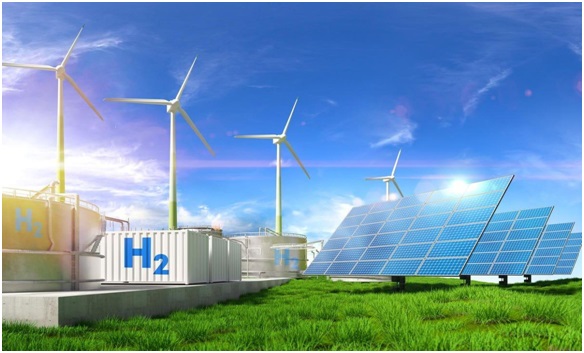
- 21 Aug 2023
Why in the News?
The Indian Ministry for Clean Energy has set rules for making green hydrogen in India. These rules say how clean the hydrogen must be. They also promise to explain how to check and confirm if the hydrogen is green.
What is Green Hydrogen?
Green hydrogen is clean energy made by splitting water using renewable sources like wind, sun, and water power. It can be a big part of moving to an eco-friendly economy and fighting climate change. This hydrogen can be saved and used as fuel for vehicles, factories, and farming.
If we compare it to grey and blue hydrogen:
- Grey hydrogen is made using electricity from fossil fuels, which make harmful gases. Right now, 95% of hydrogen is made this way.
- Blue hydrogen is also made using fossil fuels for electricity, but it's made cleaner by stopping the harmful gases from going into the air using a special technology called carbon capture and storage (CCS).
Why We Should Invest in Green Hydrogen?
- Cutting Greenhouse Gas Emissions: The main reason to embrace green hydrogen is to slash greenhouse gas emissions and fight climate change.
- Traditional fuels used for transportation and power generation produce lots of harmful emissions.
- Green hydrogen, made from clean sources, doesn't emit any of these gases, making it a planet-friendly energy choice.
- Energy Security and Independence: Fossil fuels are running out, and their prices can go up and down because of supply and demand.
- By going for clean energy like green hydrogen, countries can be more self-reliant and not as affected by price swings and fuel shortages.
- Creating Jobs and Industries: Making green hydrogen opens up new businesses and job opportunities, especially in clean energy.
- Producing, storing, and moving green hydrogen needs special skills and infrastructure, which can mean lots of new jobs.
- The renewable energy field, for example, employed 11 million people worldwide in 2018 and is set to create over 42 million jobs by 2050, says the International Renewable Energy Agency (IRENA).
- Clean-Up Tough Industries: Some industries, like heavy manufacturing and aviation, are hard to clean up.
- They make a big mess in the environment. Green hydrogen can replace dirty fuels in these sectors and help them become cleaner.
- Boosting Technology: Developing green hydrogen forces us to come up with new ideas and technologies in lots of areas.
- Making, storing, and moving green hydrogen needs new stuff, like materials and systems which can lead to big advances in technology and how things work.
What are the Uses of Green Hydrogen?
In Agriculture:
- Replacing Fossil Fuels:
- Green hydrogen can take the place of fossil fuels in farming. It can help make ammonia, which is used in fertilizers.
- Normally, we make ammonia from natural gas, which makes harmful gases.
- Green ammonia made with green hydrogen is clean and has benefits like working better and not making the soil too acidic.
- But, making lots of green ammonia needs new technology and lots of money, so it might not happen quickly.
- Green-Powered Farm Machines:
- Big machines on farms, like tractors, use a lot of energy. Using green hydrogen to power these machines can cut down on harmful gases but still give them enough power to do their jobs.
- Water Management:
- Green hydrogen can help make saltwater into freshwater using special machines called desalination plants. This helps save fresh water.
In Transportation:
- Hydrogen Fuel Cells:
- These are like magic batteries that run on hydrogen and oxygen. They make electricity for vehicles without making any bad stuff.
- Hydrogen-powered vehicles can go far and fill up fast, which is great for long trips.
In Industry:
- Saving Money:
- We can make green hydrogen when there's extra clean energy, like when the wind is blowing strong. Then we save it for when we need it. This can lower energy costs and help the environment.
- Reliable Energy:
- Green hydrogen can be made and saved right where it's used, so it's always ready.
- This means we don't have to rely too much on the power grid, which is good for energy independence.
- Less Waste:
- We can make green hydrogen from stuff we don't want, like trash and farm leftovers. This can cut down on waste and be good for the planet.
- Using Energy Better:
- Green hydrogen can power things called fuel cells, which are more efficient than regular engines which means we use less energy, which is better for everyone.
What India is Doing to Boost Green Hydrogen?
India knows that green hydrogen can help make the country cleaner and reach climate goals. They have started many plans to make, use, and even sell green hydrogen.
Here are some important ones:
- National Hydrogen Mission: This is like a big plan to make India a leader in green hydrogen and everything that comes from it. They will also work on things like trying it out, studying it, teaching people about it, making rules, and setting goals.
- Using More Green Hydrogen: The government wants some big industries, like fertilizer and oil refining, to use a part of their hydrogen from green sources. It's kind of like how they ask electricity companies to use more clean energy.
- Green Hydrogen Centers: Special places in India are being picked where they can make a lot of green hydrogen and use it too. These places will be like hubs for all things green hydrogen.
Key Highlights of India's Green Hydrogen Standard:
- Defining Green Hydrogen: Green hydrogen in India means making hydrogen in a way that doesn't create more than two kilograms of carbon dioxide for every kilogram of hydrogen. India now joins a small group of countries with a clear green hydrogen definition.
- What's Counted: This measurement includes everything from cleaning water to making hydrogen, plus purifying, drying, and compressing it.
- Different Production Methods Included: This rule covers hydrogen made using electricity (like machines) and hydrogen made from biomass (plants).
- Nodal Authority: The Bureau of Energy Efficiency (BEE) under the Ministry of Power is the boss that approves agencies responsible for watching, confirming, and certifying green hydrogen projects.
Challenges in Implementing Green Hydrogen:
- Cost Barrier: Right now, green hydrogen is more expensive than regular fossil fuels.
- This is because it needs special equipment and systems for production, storage, and transport, however, as technology gets better and we make more of it, the cost is likely to come down.
- Building Infrastructure: To use green hydrogen everywhere, we need a strong system in place to produce it, store it, and move it around.
- This system must also work well with our current energy setup to make the switch to green hydrogen smooth.
- Energy Storage: Green hydrogen comes from sources like the wind and sun, which aren't always available.
- We need smart ways to store extra energy when it's sunny and windy so that we have a constant supply of green hydrogen.
- Batteries and special hydrogen storage can help with this.
- Safety: Green hydrogen is a gas that can catch fire easily, so we need to be very careful when handling and storing it.
- Creating safety rules and regulations is important to make sure it's handled safely.
Way Forward
- Tackling High Costs: Green hydrogen currently costs more to produce and use than hydrogen from fossil fuels or other low-carbon sources. To address this, we should focus on developing more efficient technologies. This might involve improving electrolysis systems to use less energy or integrating green hydrogen production with renewable energy sources like wind and solar to reduce electricity costs.
- Government Support: Governments can play a vital role by implementing rules that encourage the adoption of green hydrogen. This might include tax breaks or subsidies to make green hydrogen more attractive for both producers and users.
- Building the Right Infrastructure: Green hydrogen needs its own infrastructure and supply chain. The current setup for regular hydrogen doesn't work well for green hydrogen. We need to build an efficient and cost-effective system for producing, storing, transporting, and distributing green hydrogen.
- Cooperation Among Stakeholders: Making green hydrogen happen involves many different groups, from renewable energy makers to hydrogen producers and users. They all need to work together and have consistent rules, standards, and incentives to make Green hydrogen a success.
Raising Awareness and Building Skills: Green hydrogen is still a new idea for many. We need to show people how it's good, safe, and practical in various uses. This also means training and developing the skills needed to produce and use green hydrogen effectively.
India’s first 3D-printed Post Office (Indian Express)
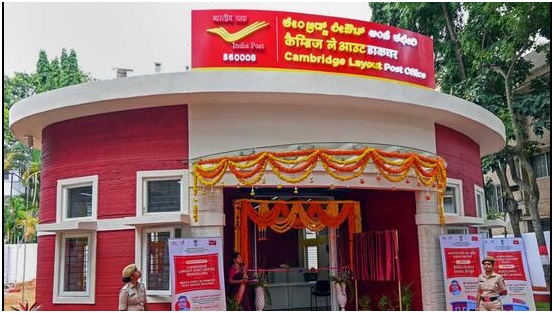
- 19 Aug 2023
Why in the News?
- The inaugural of India's first 3D-printed post office took place virtually, led by Union Minister Ashwini Vaishnaw in Bengaluru's Cambridge Layout.
- The post office was constructed in an impressive 43 days, finishing two days ahead of schedule.
- Larsen & Toubro Limited, a multinational company, partnered with IIT Madras to provide the technological expertise for building this innovative post office.
What is 3D Printing?
- 3D printing, also known as additive manufacturing, employs computer-aided design to create prototypes or functional models of objects by depositing successive layers of materials like plastic, resin, thermoplastic, metal, fiber, or ceramic.
- The process begins with computer software developing the model, which then provides instructions to the 3D printer.
- The primary form of 3D printing, known as additive manufacturing, caters to specific demands, often producing specialized items like lightweight equipment for unique projects.
- This technology finds crucial applications in fields like healthcare and related industries.
- On a global scale, the USA leads in 3D printing, commanding more than 35% of the market.
- In Asia, China dominates, capturing around 50% of the market, while Japan follows at 30%, and South Korea at 10%.
Applications of 3D printing:
- The applications of 3D printing are extensive and diverse, finding their place in various industries worldwide.
- This technology is increasingly harnessed for:
- Mass Customization: 3D printing enables tailored production, catering to individual preferences.
- It contributes to open-source designs in the agriculture, healthcare, automotive, locomotive, and aviation sectors.
- Objects are built layer by layer using materials directly from computer-aided design (CAD) models.
- 3D printing serves a wide spectrum, including affordable housing up to G+3 floors, military barracks, single-floor schools, warehousing, accommodations, and villas.
How 3D Printing Works?
- Prerequisites:
- To engage in 3D printing, you'll require a personal computer connected to a 3D printer.
- The process starts by designing a 3D model of the desired object using computer-aided design (CAD) software and then selecting the 'print' option.
- The 3D printer then takes over the rest of the process.
- Design:
- Initiating the process involves crafting a digital 3D model of the intended object.
- This model can be formed through 3D modeling software or acquired via 3D scanning techniques.
- Slicing:
- The 3D model is segmented into thin horizontal layers through specialized software, with each layer representing a cross-section of the final object.
- Preparation:
- The sliced model, along with parameters like layer thickness, print speed, material type, and temperature, is sent to the 3D printer.
- Printing: The 3D printer follows instructions and starts the printing process using various methods, including:
- Fused Deposition Modeling (FDM): This common method extrudes molten thermoplastic material through a heated nozzle, building the object layer by layer.
- Stereolithography (SLA): SLA employs UV laser to solidify liquid photopolymer resin, producing intricate and detailed objects.
- Selective Laser Sintering (SLS): In SLS, a laser fuses powdered material layer by layer, allowing for versatility in materials like plastics, metals, or ceramics.
- Powder Bed Fusion (PBF): Similar to SLS, PBF fuses powdered materials like metals, plastics, or ceramics using a laser.
- Inkjet Printing: Some printers use inkjet-like technology to deposit material in droplets, which are then cured to form layers.
- Layer-by-Layer Construction:
- The printer continues depositing material layer by layer as per the sliced model until the complete object takes shape.
- Supports might be included for intricate or overhanging parts, which can be removed after printing.
- Post-Processing:
- After printing, post-processing steps like cleaning, curing, sanding, painting or assembly might be needed, depending on the material and desired finish.
Benefits of 3D Printing Technology:
- Accessibility Enhancement: 3D printers are increasingly accessible, with local service providers offering manufacturing outsourcing services.
- Medical Advancements: In healthcare, 3D printing aids in saving lives by producing organs like livers, kidneys, and hearts.
- Ongoing developments in healthcare harness this technology for significant advancements.
- Eco-Friendly Approach: With reduced material wastage, 3D printing is inherently environmentally friendly.
- Cost-Effectiveness: Customization of desired products occurs swiftly, reducing costs associated with using multiple machines for manufacturing.
- Swift Prototyping: 3D printing generates parts within hours, drastically expediting the prototyping process.
- Efficient Design and Production: The technology enables rapid design iterations and faster production cycles.
- Strength and Lightweight Properties: Parts created through 3D printing are strong and lightweight, offering a valuable combination of properties.
- Complex Object Realization: This technology empowers the creation of intricate objects and shapes that might be unattainable through conventional methods.
Drawbacks of 3D Printing:
- Design Inaccuracies: Inconsistencies in design accuracy can arise from variations in the type of machine or process used.
- Some printers may have lower tolerances, leading to differences between the final parts and the original design.
- Copyright Concerns: As 3D printing becomes more widespread, counterfeit products could proliferate, challenging the distinction between genuine and fake items.
- Copyright infringement issues and quality control problems can emerge.
- Impact on Manufacturing Jobs: The automation and printer-based production of 3D technology may lead to a reduction in human labor.
- This could jeopardize the economies of third-world countries that heavily rely on low-skill manufacturing jobs.
- Build Size Limitations: 3D printers currently possess compact print chambers, constraining the size of printable parts.
- Larger objects may require separate printing of components and subsequent manual assembly, increasing costs and time.
- Material Constraints: While 3D printing accommodates plastics and metals, the range of available raw materials is not exhaustive.
The trajectory of 3D Printing is poised to reshape India's manufacturing and industrial landscape, leveraging digital techniques, communication, imaging, architecture, and engineering. To establish a significant presence in the additive manufacturing or 3D printing domain, it's proposed that India should integrate this technology across all sectors, including defense and public domains. Establishing a governing body comprising local and global industry experts can spearhead this transformative endeavor.
Mains Question:
- Discuss the advantages and challenges of 3D printing technology in the context of modern manufacturing. Provide specific examples of industries where 3D printing has made significant contributions and highlight the potential impact of this technology on future manufacturing processes and industries. (15M)
MoEFCC’s U-turn to Merge Autonomous Bodies (The Hindu)
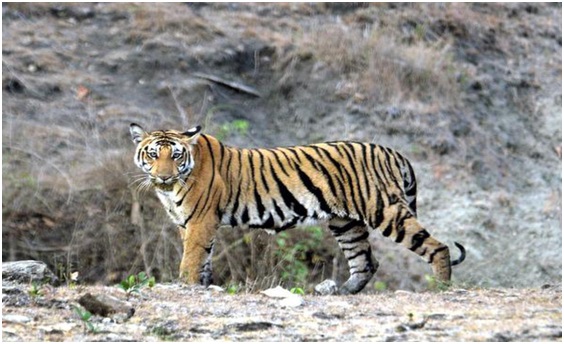
- 18 Aug 2023
Why in the News?
In June, the Ministry of Environment, Forests and Climate Change (MoEFCC) issued a notification quietly walking back on its move to establish integrated regional offices by merging offices of the Forest Survey of India (FSI), the National Tiger Conservation Authority (NTCA), the Wildlife Crime Control Bureau (WCCB), and the Central Zoo Authority (CZA), and thus bring them under the Ministry.
What's in the News?
- Amidst the Covid-19 pandemic, the central government suggested the consolidation of four entities – NTCA, CZA, WCCB, and FSI – into a single organization.
- This proposition faced intense criticism from activists who argued that it could strip key environmental bodies of their effectiveness.
- To illustrate, within the current structure, the NTCA possesses the ability to contest forest clearances for projects that involve diverting areas within Tiger Reserves.
- However, the proposed amalgamation might have complicated this process, as the NTCA would have fallen under the authority of the Deputy Director General of Forests. This individual oversees the Integrated Regional Office and reports to the Ministry of Environment, Forest and Climate Change (MoEF&CC).
About the Forest Survey of India (FSI):
- The inception of the Forest Survey of India dates back to 1981, a product of the National Commission on Agriculture's (NCA) suggestions.
- FSI conducts a biennial evaluation of the nation's forest coverage through digital analysis of satellite data from remote sensing technology. This assessment culminates in the publication of the 'State of Forest Report' (SFR).
- FSI plays an instrumental role in imparting training to forest officers from diverse Indian states.
- The base of Operations: Dehradun, Uttarakhand.
About the National Tiger Conservation Authority (NTCA):
- The National Tiger Conservation Authority, established under the Wildlife (Protection) Act of 1972, operates as a statutory body.
- Established in 2005 as a result of the recommendations of the Tiger Task Force, its core aims encompass:
- Granting legal authority to Project Tiger, thereby rendering adherence to its directives a matter of legality.
- Enhancing the accountability of both the central and state governments in managing Tiger Reserves.
- Addressing the livelihood concerns of local communities residing in the vicinity of Tiger Reserves.
- Key Responsibilities:
- Approval of tiger conservation plans devised by state governments.
- Ensuring that the integrity of tiger reserves and the ecological connectivity between different protected areas and reserves remain intact, avoiding unsustainable ecological utilization.
- Providing support and facilitation for the management of tiger reserves within states, aimed at conserving biodiversity.
- NTCA undertakes a comprehensive Tiger Census across India every four years.
- Leadership: The chairman of NTCA is the Union Minister of Environment, Forest and Climate Change.
About the Wildlife Crime Control Bureau (WCCB):
- The Wildlife Crime Control Bureau was established in 2007 as a statutory body under the Wildlife (Protection) Act of 1972.
- Main Responsibilities:
- Gathering and organizing information about organized wildlife crimes and quickly sharing it with state and other enforcement agencies to catch the criminals promptly.
- Creating a central place to store data about wildlife crimes.
- Coordinating efforts from different agencies to enforce the rules of the Act.
- Helping other countries and international groups work together to control wildlife crimes.
- Helping enforcement agencies improve their skills in investigating wildlife crimes.
- Guiding State Governments to successfully handle cases related to wildlife crimes.
- The WCCB also assists Customs authorities in checking shipments of plants and animals according to the rules of the Wildlife Protection Act, CITES, and EXIM Policy.
- The headquarters is based in New Delhi.
About the Central Zoo Authority (CZA):
- The Central Zoo Authority, established in 1992 as a legal body under the Wildlife (Protection) Act of 1972, has a specific purpose.
- What It Aims to Achieve:
- To support and enhance the national mission to conserve the diverse and valuable biodiversity of the country, especially its animals, following the guidelines of the National Zoo Policy from 1998.
- Every zoo in the nation must gain recognition from this Authority to operate.
- The Authority's main role is more about helping than controlling. It offers technical and financial assistance to zoos that have the potential to meet the desired standards in animal management.
- It sets rules and guidelines for transferring animals among zoos within the country and globally.
- It coordinates and puts into action plans for improving the skills of zoo staff, organized breeding efforts, and research done outside the natural habitat (ex-situ research).
- Headquarters: New Delhi
Why Did MoEF&CC Put Forward the Proposal?
MoEF&CC explained that the proposal was not about merging but about bringing together the different authorities to operate from 19 regional offices under one central hub.
However, in June 2023, MoEF&CC decided not to go ahead with the merger plan, possibly due to challenges in combining the involved institutions from technical and administrative standpoints.
Consumption-Based Poverty Estimates (The Hindu)
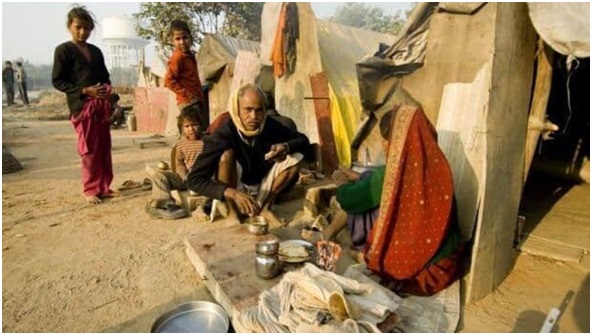
- 17 Aug 2023
Why in the News?
- In a recent assessment of multidimensional poverty conducted by NITI Aayog, the findings reveal a decline in the poverty rate from 25% in 2015-16 to 15% in 2019-21.
- Notably, approximately 135 million individuals were elevated from impoverished conditions within this timeframe.
- Consequently, it becomes imperative to scrutinize the methodologies underpinning the multidimensional poverty index and ascertain the continued pertinence of poverty evaluations based solely on consumption.
What is Multidimensional Poverty?
- Traditionally, poverty has been predominantly gauged through single-dimensional indicators, frequently revolving around income levels.
- Multidimensional poverty, in contrast, comprehensively addresses the array of deficiencies that individuals grappling with poverty encounter in their daily existence.
- These deficiencies encompass compromised health, limited access to education, insufficient living conditions, disempowerment, subpar employment situations, exposure to violence, and inhabiting environmentally precarious regions, among other factors.
Distinguishing Between Consumption-Based and Multidimensional Poverty Indices (MPI):
- Poverty gauges based on consumption levels primarily address one aspect of deprivation, without accounting for other dimensions.
- The global MPI encapsulates both the extent of multidimensional poverty (the percentage of individuals within a population grappling with multidimensional poverty) and its depth (the average number of deprivations experienced by each impoverished individual).
- Nonetheless, it's important to recognize that while Multidimensional poverty estimates offer valuable insights, they are not intended to replace the National Sample Survey (NSS) consumption-based poverty ratios.
Recent Findings on Multidimensional Poverty in India:
- Within a mere 15-year span, from 2005/2006 to 2019/2021, a striking 415 million individuals in India have successfully transcended poverty, showcasing a commendable accomplishment by the world's most populous nation.
- These revelations stem from the latest global release of the Multidimensional Poverty Index (MPI) by the United Nations Development Programme (UNDP) and the Oxford Poverty and Human Development Initiative (OPHI) based at the University of Oxford.
- The global MPI stands as a comprehensive measure of poverty, encapsulating the various deprivations that underprivileged individuals encounter in the realms of education, health, and living conditions.
- In the year 2005/2006, approximately 645 million people grappled with multidimensional poverty in India; this figure dwindled to around 370 million in 2015/2016 and further down to 230 million in 2019/2021.
Challenges Associated with the Multidimensional Poverty Index:
- The Global MPI's Findings Are Not a Novel Revelation
- The application of the Global MPI as a conclusive breakthrough isn't unprecedented.
- Poverty estimations grounded in consumer spending and utilizing the Tendulkar committee's framework revealed a reduction of 137 million individuals living in poverty between 2004-05 and 2011-12, despite population growth.
- Following the Rangarajan Committee's methodology, the decrease from 2009-10 to 2011-12 stands at 92 million, equating to an annual reduction of 46 million.
- Myriad Indicators to Consider
- Given the extensive array of dimensions and indicators, it becomes imperative to engage in meticulous asset mapping to pinpoint the most pertinent parameters.
- However, owing to the abundance of indicators spanning multiple dimensions, the accurate evaluation, and consequent effective policy implementation might pose challenges.
- Aggregating Across Indicators
- This presents yet another predicament, as these indicators should ideally remain independent of each other.
- For instance, indicators like access to clean drinking water should not be aggregated with factors such as child mortality."
Challenges Regarding Consumption Expenditure Surveys:
- After 2011-12, there is a lack of accessible official records on consumer expenditure, which inhibits the capacity to juxtapose it with trends in the multidimensional poverty index.
- The survey outcomes about consumption expenditures from 2017-18 have not been officially disseminated.
- Given the dearth of this information, various studies have attempted to investigate poverty utilizing indirect techniques along with resources such as the Centre for Monitoring Indian Economy (CMIE) and the Periodic Labour Force Survey (PLFS). These endeavors, however, have yielded disparate findings.
Approaches to Tackle MPI Challenges:
- Integration of MPI with Consumption-Based Poverty Assessments
- Examining the advancements in non-monetary aspects like education, healthcare, sanitation, access to clean water, and child survival alongside income or consumption poverty can provide valuable insights.
- However, the conversion of all these variables into a single index introduces complexities.
- Incorporating Public Services as an Additional Dimension: Regarding multidimensional matters, considering public services as an independent dimension, beyond consumption, can yield more comprehensive results.
Reforming Consumption Expenditure Surveys: A Necessity
- Enhancing Data Collection Practices
- An imperative concern revolves around the disparities observed in aggregate consumption estimations between National Accounts Statistics (NAS) and National Sample Survey (NSS) data.
- It's worth noting that across all nations, the NSS and NAS consumption estimates invariably diverge – a trend India also follows.
- What is particularly perplexing is the escalating dissimilarity in India between NSS and NAS consumption figures over the years.
- From a divergence of under 10% in the late 1970s, this gap has widened to a substantial 53.1% in 2011-12. This disparity is too significant to disregard.
- The National Statistical Office ought to meticulously analyze this issue and proffer potential solutions to enhance data collection through both avenues.
- Moreover, it's essential to complement the outcomes of consumption surveys with an evaluation of the impact of public expenditure on the health and education of distinct expenditure strata.
A prevalent perception associates wealth or destitution with high or low-income levels. The insufficiency of income is mirrored in numerous non-income poverty indicators.
Defining poverty in terms of income, or when income data is lacking, in terms of expenditure, appears to be the most pertinent approach, and this methodology is prevalent across the majority of countries.
Instances of Cloudburst and Their Frequency in India (Indian Express)
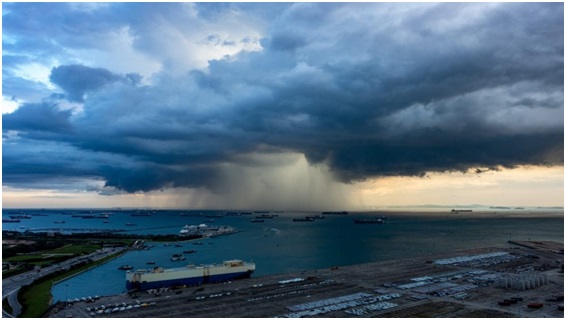
- 16 Aug 2023
Why in the News?
- After heavy rains in Himachal Pradesh, landslides occurred, resulting in 22 fatalities.
- Chief Minister Sukhvinder Singh Sukhu reported cloudbursts and advised against approaching waterbodies and vulnerable areas.
- The Indian Meteorological Department (IMD) forecasted scattered to widespread rains in Himachal Pradesh on August 14 and 15, and in Uttarakhand from August 14 to 18, followed by a substantial decrease.
Reasons Behind Intense Rains in Himachal and Uttarakhand:
- The combination of the monsoon trough's northward progression and its interaction with a weakened western disturbance is triggering heavy rainfall in Himachal Pradesh and Uttarakhand.
- The monsoon trough takes the form of an extended low-pressure region, stretching from a "heat low" situated over Pakistan's seas to the Bay of Bengal region's head (encompassing parts of Odisha, West Bengal, and Bangladesh).
- The monsoon trough is a semi-permanent component of the monsoon's circulation, as outlined by the India Meteorological Department.
- Presently, the monsoon trough has shifted northward beyond its usual position, overlaying the foothills of the Himalayas.
- In the near term, the monsoon trough will undergo a southward shift, leading to a temporary decrease in hill-region rainfall and an upsurge in rainfall across the east-central regions of India.
About Cloudbursts
- Cloudbursts refer to highly concentrated and intense rainfall events.
- As per the India Meteorological Department (IMD), cloudbursts involve exceptionally heavy rain concentrated over a limited region, with a rapid rate of around 10 cm per hour.
- This phenomenon is accompanied by robust winds and lightning, typically occurring across an area of about 20 to 30 square kilometers.
- Following this criterion, even 5 cm of rain within just thirty minutes across the same area would be classified as a cloudburst.
- Cloudbursts are relatively frequent occurrences, especially in the monsoon season.
- A majority of these incidents take place in the Himalayan states, where the unique local geography, wind patterns, and temperature differences between various atmospheric layers create favorable conditions for their formation.
Occurrence of Cloudburst:
- Cloudbursts unfold when moisture-laden air ascends hilly terrain, forming vertical cloud columns known as 'cumulonimbus' clouds.
- These clouds typically yield rain, thunder, and lightning. This upward cloud movement is termed an orographic lift.
- Such unstable clouds generate an intense rainstorm over a limited area once they amass enough moisture while being trapped within the ridges and valleys amid hills.
- The energy needed for a cloudburst originates from the ascending air movement.
- Cloudbursts are predominantly witnessed at altitudes ranging from 1,000 to 2,500 meters above sea level.
- Moisture is often sourced from low-pressure systems (associated with cyclonic storms in the ocean) positioned over the Gangetic plains, coupled with low-level winds blowing in from the east.
- On occasions, north-western winds also contribute to cloudburst occurrence.
- Given the multifaceted factors that must align for a cloudburst event, their likelihood is quite rare.
Cloudburst Prediction:
- The India Meteorological Department (IMD) anticipates forthcoming rainfall occurrences with a certain lead time. However, they do not project the precise volume of rainfall—this remains true for meteorological bodies worldwide.
- Forecasts generally pertain to categories like light, heavy, or very heavy rainfall, omitting the exact measurements of rainfall at specific locations.
- Moreover, these predictions encompass relatively larger geographic regions such as states, meteorological sub-divisions, or even districts, and their accuracy diminishes for smaller areas.
- While it's theoretically conceivable to forecast rain for minute areas, the prerequisites include an intricate network of weather instruments and computational capabilities that currently appear impractical with available technologies.
- As a result, the exact anticipation of individual cloudburst incidents remains beyond current forecasting capabilities.
Are Cloudburst Incidents on the Rise?
- There is no discernible long-term trend indicating an increase in cloudbursts, as defined by the IMD.
- Nevertheless, occurrences of extreme rainfall, along with other extreme weather phenomena, are on the rise globally, not solely in India.
- While the total rainfall volume in India has not undergone significant change, a growing portion of precipitation is concentrated within a brief timeframe.
- This implies that instances of heavy rainfall are becoming more intense, accompanied by prolonged dry periods within the rainy season.
- This distinctive pattern, attributed to climate change, potentially signifies an elevated probability of cloudburst events as well.
Consequences of Cloudbursts:
- Flash Floods: Cloudbursts can lead to catastrophic flash floods, resulting in the uprooting of trees and the displacement of boulders and debris.
- Infrastructure Deterioration: The sheer intensity of cloudburst downpours can inflict significant harm on infrastructure, including houses, roads, and bridges.
- Landslides: In hilly and mountainous regions, cloudburst-induced heavy rainfall can precipitate landslides.
- Ecological Impact: Cloudbursts can also negatively impact trees, plants, and crops, causing loss of cultivable land and affecting livestock.
Cloudbursts can trigger a chain of devastating outcomes, encompassing flash floods, damage to infrastructure, landslides, and ecological disruption.
Areas Prone to Cloudbursts in India:
- Cloudbursts primarily occur across the challenging landscapes of the Himalayas, the Western Ghats, and the northeastern hill states of India.
- Intense rainfall on these vulnerable steep slopes triggers landslides, flash floods, and debris flows, leading to extensive devastation and loss of lives and property.
- An illustration of this was the flash floods in the Lidder Valley on July 8, 2022, along the route to the Amarnath Temple in Jammu and Kashmir, which tragically claimed the lives of numerous pilgrims.
- Furthermore, robust monsoon winds along the coastline can also induce cloudbursts, as evident in incidents like Mumbai (2005) and Chennai (2015).
- Coastal cities face heightened vulnerability due to cloudbursts, as these sudden floods can disrupt conventional stormwater and flood management strategies in these urban areas.
Strategies to Mitigate Cloudburst Impact:
- Controlled Construction Near Water Bodies: Regulate construction near riverbanks, considering water levels during heavy rainfall to prevent vulnerability.
- Enhanced Water Control Infrastructure: Reinforce embankments, barrages, and dams to manage and regulate water flow more effectively.
- Ecologically Informed Local Planning: Implement localized planning that acknowledges the region's ecological sensitivity and engages local communities.
- Balanced Infrastructure Development: Scrutinize infrastructure projects and protect eco-sensitive zones to maintain environmental integrity.
- Advanced Forecasting and Technology: Improve IMD forecasting and integrate advanced technology to monitor and predict extreme weather occurrences. This allows for early warnings, evacuation planning, and readiness.
- Eco-Friendly Approaches: Promote eco-sensitive tourism and adopt environmentally friendly policies to foster sustainable development in the area.
- Disaster Management Integration: Embed disaster management and prevention measures into the developmental planning process for a comprehensive approach.
- Addressing Himalayan Region: Address the increasing frequency of cloudbursts in the Himalayan region, driven by the higher decadal temperature rise compared to the global trend.
By implementing these measures, it's possible to alleviate the impacts of cloudbursts and enhance the region's resilience to extreme weather events.
The global incidence and severity of cloudbursts are anticipated to rise due to climate change. A mere 1-degree Celsius temperature elevation could correspond to a 7-10% augmentation in moisture and rainfall levels. This heightened moisture capacity in the air leads to elongated dry spells punctuated by brief bursts of intense rainfall. Consequently, more substantial cumulonimbus clouds form, heightening the likelihood of cloudbursts.
In light of this, immediate actions and well-devised policies are imperative to safeguard lives and assets from escalating extreme events, which are poised to intensify as global temperature shifts intensify.
Mains Question:
- Elaborate on the causative factors and ramifications associated with cloudbursts, and subsequently, examine the strategies aimed at averting and mitigating the profound consequences of these intense rainfall events. (15M)
Enhancing the Efficiency of Urea as a Fertilizer: Reasons and Necessity (Indian Express)
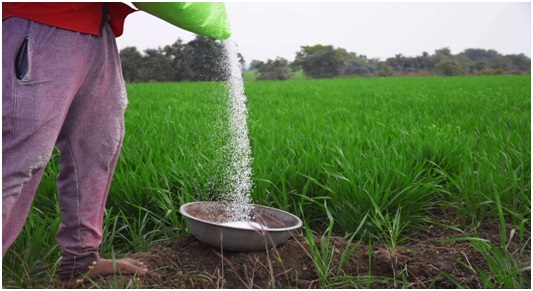
- 15 Aug 2023
Why in the News?
- Prime Minister of India has recently inaugurated 'Urea Gold,' a novel fertilizer created by the state-owned Rashtriya Chemicals and Fertilizers Ltd (RCF), which involves enhancing urea with sulfur.
- Urea, a white nitrogen-based chemical fertilizer, artificially enriches plants with a key nutrient, nitrogen.
What are Fertilizers?
- A fertilizer is a substance, whether naturally occurring or synthetically produced, comprising essential chemical elements like Nitrogen (N), Phosphorus (P), and Potassium (K), which enhance the growth and productivity of plants.
- In India, the primary fertilizers are Urea, DAP, and Muriate of Potash (MOP), forming the trio of fundamental fertilizing agents.
Fertilizer Utilization in India:
- The Green Revolution in the 1960s experienced remarkable success due to the abundant application of these fertilizers, resulting in increased grain output.
- However, the response of crop yields to fertilizer usage has significantly declined over time.
- For instance, during the 1960s in India, 1 kg of NPK nutrients yielded 12.1 kg of cereal grains; this yield diminished to 5 kg during the 2010s.
- The primary cause behind this decline has been the imbalanced application of Nitrogen (N) by farmers.
What Factors Sustain Urea's Prominence as the Leading Fertilizer?
- Advantages in Abundance:
- Urea retains its supremacy as the most extensively utilized fertilizer owing to its enriched nitrogen content, a pivotal nutrient for promoting plant growth.
- Urea's widespread popularity is attributed to its accessibility and cost-effectiveness, presenting farmers with a practical nitrogen source.
- Additionally, its ease of storage and transportation enhances its convenience for both agricultural practitioners and manufacturers.
- The versatility of urea as a fertilizer is noteworthy, as it suits a diverse array of crops and soil compositions.
- Substantial Subsidization:
- In India, urea maintains its position as the top-ranking fertilizer in terms of production, import, consumption, and regulatory control.
- Urea's consumption has surged by more than a third since 2009-10, primarily due to a mere 16.5% increase in its maximum retail price (MRP), rising from Rs 4,830 to Rs 5,628 per tonne.
- Nonetheless, the current per-tonne MRP of urea, especially when juxtaposed against DAP (Rs 27,000) and MOP (Rs 34,000), significantly deviates from the recommended 4:2:1 NPK usage ratio, widely considered optimal for Indian soil conditions."
Dual Challenges Arising from Escalating Urea Consumption:
- India's annual urea consumption, reaching around 36 million metric tons, currently ranks second only to China's 51 million metric tons. China's urea production is primarily coal-derived.
- In the previous fiscal year, approximately 7.6 million metric tons of urea were imported out of the total 36 million metric tons consumed. Notably, even domestically produced urea relies on imported natural gas as its primary feedstock.
- The second challenge centers on nitrogen use efficiency (NUE). A mere 35% of the nitrogen applied through urea in India effectively contributes to crop growth and harvested yields.
- The diminishing NUE, declining from approximately 48% in the early 1960s, compels farmers to increase fertilizer application to attain the same level of yield.
Government Initiatives to Curtail Urea Consumption in India:
- The initiation of the nutrient-based subsidy (NBS) framework in 2010 marked a pivotal step.
- Under NBS, the government established a fixed per-kilogram subsidy for each fertilizer nutrient – Nitrogen (N), Phosphorus (P), Potash (K), and Sulphur (S) – a departure from the previous product-specific subsidy system.
- The primary goal is to encourage balanced fertilization by dissuading excessive application of urea (46% N), di-ammonium phosphate (DAP - 46% P plus 18% N), and muriate of potash (MOP - 60% K).
- In 2015, the government mandated the application of neem oil coating to all domestically produced and imported urea.
- While initial years witnessed a decline in consumption, this trend reversed from 2018-19.
- Subsequently, the transition from 50 kg bags to 45 kg bags occurred in 2018. Moreover, the Indian Farmers' Fertiliser Cooperative (IFFCO) introduced the liquid 'Nano Urea' in 2021. This innovative form of urea as nanoparticles aims to rectify the disproportionate and unsystematic usage of conventional urea. It seeks to elevate crop productivity while diminishing soil, water, and air pollution.
- Despite these government measures to counter illegal diversion for non-agricultural purposes and enhance nitrogen use efficiency, the reduction in urea consumption has not been achieved."
What is Urea Gold?
- Ordinary urea typically contains a single plant nutrient, Nitrogen (N), at a concentration of 46%. Urea Gold, on the other hand, consists of 37% N along with an additional 17% sulfur (S).
- Urea Gold pursues dual objectives.
- Firstly, it provides Sulphur (S) in conjunction with Nitrogen (N).
- Indian soils suffer from Sulphur deficiency, a shortfall that is particularly crucial for oilseeds and pulses – commodities in which the nation is heavily reliant on imports.
- Secondly, Urea Gold aims to enhance the Nitrogen Use Efficiency (NUE) of urea.
- The sulfur coating on urea ensures a more gradual release of Nitrogen, prolonging its action.
- This extended effect keeps plants vibrant for an extended duration, thus reducing the frequency of application. For instance, just two bags of Urea Gold (instead of three) could potentially cover an acre of paddy or wheat.
- As of now, the commercial launch of Urea Gold by RCF is pending, with pricing details yet to be disclosed.
Primary Obstacle in Urea Fortification and the Path Forward:
- A key challenge pertains to pricing dynamics.
- For instance, the anticipated Maximum Retail Price (MRP) for Urea Gold is projected to range between Rs 400-500 for a 40-kg bag (compared to approximately Rs 254 for a 45-kg bag of regular neem-coated urea).
- One potential solution could involve allowing market-driven determination of MRPs for all coated fertilizers.
- Given that conventional urea and DAP will persist at heavily subsidized rates, manufacturers are likely to face constraints in levying substantial premiums on their fortified fertilizer offerings.
- An optimal approach would involve conducting the coating process directly at the manufacturing facility.
- This ensures a more consistent distribution of micronutrients and simplifies the task for farmers, sparing them the intricacies of blending the elements themselves.
Mains Question:
- Discuss the outcomes of CACP's proposal to incorporate Urea into Nutrient-Based Subsidy. Analyze how Urea's exclusion from NBS contributes to nutrient imbalance and assess how challenges, including economic burden and black marketing, impact the effectiveness of NBS. (15M)
Why India Needs an Industrial Policy? (The Hindu)
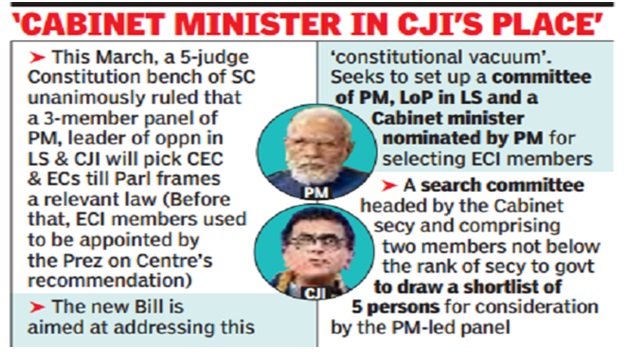
- 12 Aug 2023
Why in the News?
The Union Government on Thursday introduced a Bill removing the Chief Justice of India (CJI) from a three-member panel to select the Chief Election Commissioner (CEC) and Election Commissioners.
What's in the News?
- The government has brought the Chief Election Commissioner and other Election Commissioners (Appointment, Conditions of Service and Term of Office) Bill, 2023, in the Rajya Sabha.
- This bill aims to eliminate the Chief Justice of India (CJI) from the group responsible for selecting the Chief Election Commissioner and Election Commissioners.
- In an earlier development in March 2023, the Supreme Court decreed that a three-member committee should oversee the selection process for Chief Election Commissioner and Election Commissioners.
- The committee, according to this ruling, should consist of the Prime Minister, the Leader of the Opposition in the Lok Sabha, and the Chief Justice of India.
Supreme Court's Stand on Election Commission Appointments:
- A Constitution Bench of the Supreme Court, comprising five judges, was engaged in hearing a collection of petitions requesting a selection procedure akin to that observed in the appointment of the Director of the Central Bureau of Investigation (CBI).
- The Director of the CBI is appointed through a committee, which includes the Prime Minister, the Leader of the Largest Opposition Party, and the Chief Justice of India.
- In a unanimous decision reached in March 2023, the Court expressed its dissent regarding the existing approach of the Central Government in nominating members of the electoral oversight body.
- Citing Article 324(2) of the Constitution, the Court urged the Parliament to establish legislation governing the criteria for selection, terms of service, and duration of office for the Chief Election Commissioner (CEC) and Election Commissioners (ECs).
- Pending the formulation of such legislation, the highest court convened a panel comprised of the Prime Minister, the Chief Justice of India, and the leader of the opposition to undertake these appointments.
Proposed Bill to Remove CJI from Panel for Election Commissioner Selection:
The Chief Election Commissioner and other Election Commissioners (Appointment, Conditions of Service and Term of Office) Bill, 2023, has been introduced by the Law Minister in the Rajya Sabha.
Highlighted Aspects of the Bill:
- Exclusion of CJI:
- The bill endeavors to substitute the Chief Justice of India with a Cabinet Minister nominated by the Prime Minister within the committee tasked with choosing the Chief Election Commissioners (CECs) and Election Commissioners (ECs).
- Addition of Opposition Leader:
- The bill adds the Leader of the Opposition in Lok Sabha as a member of the selection committee.
- Eligibility Criteria:
- The bill stipulates that individuals for the ECI, including CEC and ECs, must be individuals who hold or have held positions equivalent to Secretary to the Government of India.
- They should possess integrity, coupled with expertise and familiarity in election management and administration.
- Selection Process:
- Initially, a Search Committee, headed by the Cabinet Secretary and encompassing two members not below the rank of Secretary with election-related knowledge, will craft a list of five candidates.
- This list will then be submitted to the Selection Committee.
- Composition of Selection Committee:
- Chaired by the Prime Minister, the Selection Committee comprises the Leader of the Opposition or the leader of the largest Opposition party in Lok Sabha, alongside a Cabinet Minister designated by the Prime Minister.
- The Selection Committee is empowered to consider candidates outside the Search Committee's list.
- Tenure and Terms:
- The CEC and ECs continue to hold their positions for a six-year term or until reaching the age of 65, whichever comes earlier.
- The Bill aligns their remuneration with that of the Cabinet Secretary.
- This diverges from the current practice under the Election Commission (Conditions of Service of Election Commissioners and Transaction of Business) Act, 1991, which equates their salary with that of a Supreme Court judge. Despite the change, the monetary amount remains consistent.
- Repealing the 1991 Act:
- The bill revokes the Election Commission (Conditions of Service of Election Commissioners and Transaction of Business) Act, 1991, which hitherto guided the operations of the ECI.
- The Bill mandates that the ECI's proceedings be conducted with unanimity whenever possible; in the case of divergent opinions, the majority's viewpoint prevails.
About Election Commission of India:
- The Election Commission of India (ECI) is an autonomous constitutional authority responsible for administering Union and State election processes in India.
- It was established in accordance with the Constitution on 25th January 1950 (celebrated as national voters' day). The secretariat of the commission is in New Delhi.
- The body administers elections to the Lok Sabha, Rajya Sabha, and State Legislative Assemblies in India, and the offices of the President and Vice President in the country.
- It is not concerned with the elections to panchayats and municipalities in the states. For this, the Constitution of India provides for a separate State Election Commission.
- By Article 324 of the Constitution of India, it is vested with the power of conducting elections to Parliament, State Legislatures, Office of President and Vice-President of India.
Structure of ECI:
- Initially, the commission had a single election commissioner. Yet, the Election Commissioner Amendment Act 1989 transformed it into a group with multiple members.
- The Election Commission is made up of the Chief Election Commissioner (CEC) along with additional election commissioners, determined by the President as needed.
- Currently, it comprises the CEC and two Election Commissioners.
- On a state level, the Chief Electoral Officer, an IAS rank Officer, supports the election commission.
Appointment & Term of Commissioners:
- The President designates the Chief Election Commissioner (CEC) and Election Commissioners.
- Their service spans six years or until they reach 65 years of age, whichever comes first.
- They are accorded equivalent status and entitlements to those enjoyed by Supreme Court (SC) Judges in India.
Removal:
- They possess the option to resign at any point or may face premature removal.
- In the case of the Chief Election Commissioner (CEC), dismissal can only occur through a procedure akin to the removal of a Supreme Court judge, executed by Parliament.
Limitations:
- The Constitution doesn't outline the prerequisites (legal, educational, administrative, or judicial) for Election Commission members.
- It doesn't define the duration of service for Election Commission members.
- It doesn't prevent former election commissioners from securing subsequent government appointments.
Mains Question:
- Analyze the constitutional mechanisms established to safeguard the autonomy and neutrality of the Election Commission of India. Discuss the constraints that can potentially influence the functioning of the Election Commission of India at the university level. (15M)
Select Committee for Delhi Services Bill (The Hindu)
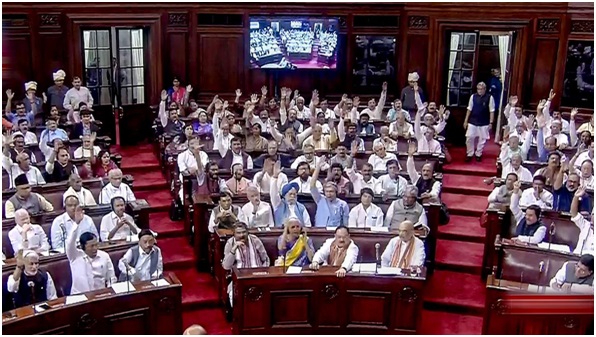
- 09 Aug 2023
Why in the News?
- Following complaints from a minimum of four Members of Parliament who expressed their objection to their names being added to a prospective Select Committee for the Delhi Services Bill without their prior consent, an important development unfolded.
- The proposition for the Select Committee had been put forth by Raghav Chadha, a Member of Parliament representing the Aam Aadmi Party (AAP), within the Upper House. Consequently, in light of these concerns, the Deputy Chairman of the Rajya Sabha made an announcement about initiating an inquiry into the matter.
Select Committee Overview:
- In India's Parliament, a diverse range of committees serves distinct functions.
- Among these, 12 Standing Committees are permanent entities, their members nominated periodically by the Chairman.
- Amit Shah's preference for the Privileges Committee to address the Raghav Chadha issue aligns with this category.
- Additionally, there exist ad hoc or temporary committees established for specific purposes, such as the examination of specific Bills, and their dissolution upon fulfilling their role.
- A Select Committee belongs to this transient category.
Select Committee Procedure:
- Although transient, a Select Committee adheres to a defined procedure outlined in the Rules of Procedure.
- According to Rule 125 of the Rajya Sabha Rules and Procedures, any member can propose an amendment, advocating Bill's referral to a Select Committee.
- This motion can originate from the Bill's sponsoring member or any other parliamentarian.
How members are chosen for a Select Committee:
- In accordance with the rules of the Rajya Sabha, Bills earmarked for Select Committees are accompanied by motions passed by the House, specifying the individuals designated for the Committee.
- When a motion proposes Bill's referral to a Select Committee, the House is responsible for appointing the Committee members.
- It is a foundational principle that no member can be included in a Select Committee unless they willingly participate.
- The onus lies with the proposer of the motion to confirm the intended member's willingness to serve on the Committee. While rules mandate obtaining a member's consent before their inclusion, they do not explicitly address the collection of signatures.
- The actual composition of a Select Committee is variable, differing across Committees.
- In the context of Joint Committees, members are apportioned in a 1:2 ratio between the Rajya Sabha and the Lok Sabha.
- The Chairman of the Committee is typically selected by the Chairman of the Rajya Sabha from among the Committee members.
- Additionally, the member or Minister overseeing the Bill is usually included as a Committee member.
What is the functioning process of a Select Committee?
- To commence proceedings, a minimum of one-third of the total committee members must be present, constituting a quorum.
- In instances where votes are tied on a particular issue, the chairman (or another designated presiding individual) holds the authority for a decisive or casting vote.
- For a focused examination of specific aspects linked to the Bill, a sub-committee may be established by a select committee.
- The committee's chairperson will endorse the report, which can include dissenting opinions from any member.
- Following endorsement, the report and any dissenting viewpoints will be submitted, printed, and circulated among all members of the Rajya Sabha."
What are the roles of a Select Committee?
- The core responsibility of the Committee involves meticulously reviewing each clause within the Bill's text.
- This is carried out to ensure that the Bill effectively captures the original intention and proposed objectives.
- To facilitate this, the Committee can call upon experts, interested parties, and organizations for written input or oral testimonies.
- Furthermore, the Committee possesses the authority to seek elucidation from government officials regarding the underlying policy of different provisions in the Bill, as well as to obtain necessary background information.
- Upon collecting and analyzing the evidence, the Committee deliberates on the Bill's individual components and crafts its conclusions, potentially amending clauses as necessary.
- Additionally, the Committee holds the prerogative to physically visit relevant institutions and organizations to gain firsthand insights into matters tied to the Bill."
What happens following the submission of a Select Committee's report?
- The committee's report holds a suggestive character, allowing the government the flexibility to adopt or decline the recommendations presented.
- Furthermore, a Select Committee has the option to present its revised iteration of the Bill.
- Should this transpire, the minister responsible for the respective Bill can propose that the committee's version of the Bill be deliberated upon and approved within the legislative assembly."
Importance of Parliamentary Committees?
- Expertise in Legislation:
- Given that many Members of Parliament lack specialized knowledge in specific fields, relying on insights from experts and stakeholders is crucial for informed decision-making.
- Parliamentary committees play a pivotal role in aiding MPs to access expertise and allocate sufficient time to thoroughly analyze issues.
- Simulating Parliament's Functions:
- These committees effectively emulate the functions of the larger parliamentary body.
- Comprising MPs from various parties, they are elected using the single transferable vote method, reflecting the overall party distribution in Parliament.
- Thorough Examination Tool:
- Bills directed to these committees undergo meticulous scrutiny, with active engagement from external stakeholders, including the general public, to solicit diverse perspectives.
- Government Oversight Mechanism:
- Despite non-binding recommendations, committee reports serve as public records of inclusive consultations.
- They compel the government to reevaluate contentious provisions, adding a degree of accountability.
- Fostering Collaborative Discussions:
- Conducted behind closed doors, committee meetings encourage collaborative discussions among MPs.
- The absence of public scrutiny diminishes the need for grandstanding, enabling more productive exchanges."
Organ Shortage and Transplants in India (The Hindu)
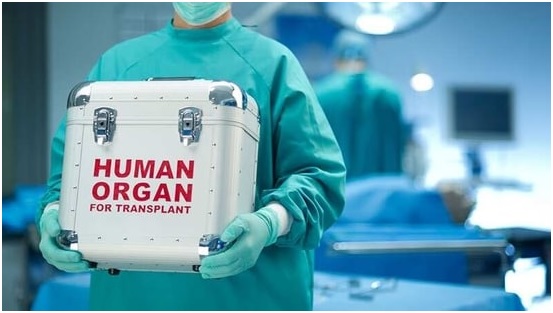
- 08 Aug 2023
Why in the News?
Around three lakh patients wait for organ donation in the country and the country’s increase in donors has not kept pace with demand; experts say country urgently needs to increase its deceased donation rate, and there should be greater awareness among ICU doctors and families on how one deceased donor can save several lives.
Key Data Highlights:
Health Ministry's Insights:
- The count of donors, comprising both living and deceased, witnessed a growth from 6,916 in 2014 to approximately 16,041 in 2022.
- Within the domain of deceased donors, the nation achieved notable milestones with 1,589 kidney transplants, 761 liver transplants, and 250 heart transplants during 2022.
- A substantial progression was seen in kidney and pancreas transplants, ascending from merely three in 2014 to a significant 22 in 2022.
- Analysis of the statistics reveals a compelling trend where approximately 70% to 75% of donors are female. The roles of wives, mothers, and sisters have prominently emerged as major sources of organ donation.
Global Perspective:
- On a global scale, the reality remains that a mere 10% of individuals necessitating organ transplants are able to access them in a timely manner.
- Noteworthy examples of more robust organ donation systems can be observed in countries such as Spain and the United States. These nations exhibit higher numbers, with 30 to 50 organ donations per million people, showcasing a commendable commitment to addressing the shortage of organs.
Current Scenario of Organ Donation and Transplantation in India:
- The practice of organ transplants in India has witnessed a remarkable surge, growing by more than threefold, escalating from 4,990 instances in 2013 to an impressive 15,561 cases in 2022.
- The foremost among organ transplants remains the kidney transplant, followed by liver, heart, lung, pancreas, and small bowel transplants, collectively contributing to the medical landscape.
- The year 2022 stood out with the execution of nearly 12,791 living donor transplants and an additional 2,765 transplants from deceased donors.
- Of note, a notable proportion of these transplants (14%) were sourced from deceased donors, underscoring the significant role of living donors, particularly in kidney and liver contributions.
- In terms of geographic distribution, the organ donation dynamic is concentrated. In 2021, the bulk of deceased organ donations occurred within 15 specific states, with the top five states collectively accounting for an impressive 85% of the total contributions.
Why India Needs More Organ Donations?
- India boasts the distinction of being the world's third-largest performer of transplants. However, the demand for organs significantly outstrips the supply of available transplants.
- The surge in lifestyle-related illnesses is amplifying the call for organs, particularly for vital organs like hearts and lungs that are solely obtainable from deceased donors.
- An alarming number of approximately 1.5 lakh individuals succumb to road traffic accidents each year in India. This presents an opportunity to potentially harness organs from these cases, contributing to a more robust supply.
- Beyond saving lives, the practice of organ transplantation serves to alleviate the burden on healthcare systems. This includes a reduction in hospital stays, the need for repeat surgeries, and extended treatments.
- India's existing organ donation rate stands at a modest 0.52 per million population, notably lower than the figure in countries like Spain, which boasts a rate of 49.6 per million.
- One of the most compelling aspects of organ donation is its capacity to impact multiple lives simultaneously. A single donor can serve as a source of numerous organs and tissues, magnifying the potential to save and enhance multiple lives.
Issues, Challenges and Ethics in Organ Transplantation:
- Lack of Public Awareness:
- A prevailing challenge revolves around inadequate public awareness regarding the significance of organ donation and the subsequent transplantation process.
- This lack of understanding contributes to a dearth of available donated organs.
- Shortfall in Donors:
- Despite heightened efforts in awareness campaigns, a shortage of willing organ donors persists due to factors such as religious beliefs and a lack of trust in the healthcare system.
- Ethical and Legal Complexities:
- The arena of organ donation faces intricate ethical and legal dilemmas. These encompass matters like consent, the fair allotment of organs, and equitable distribution, presenting multifaceted challenges.
- Transportation and Preservation:
- The preservation and transportation of organs demand specific conditions to maintain their transplant viability.
- These logistical hurdles are especially pronounced for organs with limited shelf lives.
- Medical Suitability Constraints:
- The suitability of donated organs for transplantation can be impeded by medical conditions or other considerations.
- This dynamic can impose restrictions on the available pool of organs for potential transplant recipients.
- Financial Implications:
- A significant challenge arises in the form of the associated costs linked with organ transplantation.
- These financial burdens can potentially restrict access to treatment for certain patients, creating disparities in care.
What are the Government Steps Taken to Promote Organ Donation in the Country?
- National Organ Donation Day:
- Designating November 27 as National Organ Donation Day, the Indian government seeks to heighten public awareness about the significance of organ donation and encourage individuals to pledge their organs.
- National Organ Transplant Programme (NOTP):
- Launched in 2014, NOTP is a comprehensive endeavor.
- It aims to create a national registry encompassing both organ donors and recipients, bolster the presence of organ transplant centers, and foster greater awareness about the critical nature of organ donation.
- Deceased Organ Donation Program:
- The Ministry of Health and Family Welfare introduced this program to actively encourage organ donations from individuals who have passed away.
- Transplantation of Human Organs and Tissues Act (THOTA):
- Instituted in 1994, THOTA serves as the framework regulating organ transplantation within India.
- This legislative act also establishes the National Organ and Tissue Transplant Organization (NOTTO) and State Organ and Tissue Transplant Organizations (SOTTO).
- Their roles encompass overseeing organ transplantation activities and donations.
- Swasth Bharat Yatra:
- Spearheaded by the government, this campaign is dedicated to promoting a health-conscious lifestyle, preventing lifestyle diseases, raising awareness about organ donation, and motivating individuals to pledge their organs.
- National Organ and Tissue Transplant Registry:
- Establishing a dedicated National Organ and Tissue Transplant Registry, India now maintains comprehensive records of organ donations and transplantations across the nation.
- This database aids in formulating effective policies and strategies for fostering organ donation and transplantation.
- Organ Retrieval Banking Organization:
- Housed within the All India Institute of Medical Sciences (AIIMS) in New Delhi, this organization assumes responsibility for retrieving, preserving, and efficiently distributing organs for transplantation in the Delhi-NCR region.
Moving Ahead:
At present, India is witnessing an enhanced consciousness regarding organ donation, with a growing number of families expressing willingness to engage in this altruistic endeavor, as reported by medical professionals. In the journey forward, it is imperative to emphasize awareness, cultivate trust, and augment the cadre of medically proficient transplant coordinators. This collective effort holds the potential to amplify deceased donations significantly. In the broader spectrum, organ transplantation stands as a pivotal pillar in the medical domain. It not only bestows hope upon individuals grappling with organ failure but also elevates their quality of life, embodying a profound impact on healthcare.
Mains Question:
- Discuss the impact of government initiatives like the National Organ Transplant Programme and the Deceased Organ Donation Program on addressing challenges and increasing awareness in organ transplantation in India. (15M)
Incremental injustice (The Hindu)
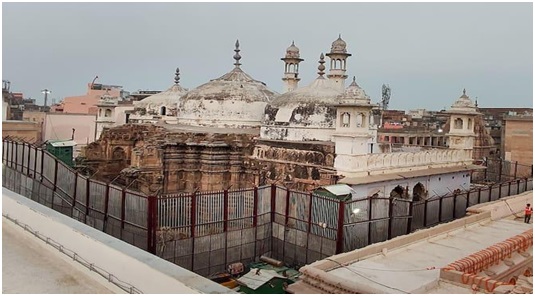
- 07 Aug 2023
Why in the News?
Recently, the Varanasi District Court issued an order for the Archaeological Survey of India (ASI) to conduct a survey of the Gyanvapi mosque.
Background:
In 1984, around 558 Hindus assembled in Delhi to hold the first religious parliament. During this gathering, they made a unanimous decision to initiate a nationwide campaign for Hindus to assert their rights over the sacred shrines located in Varanasi, Mathura, and Ayodhya. The movement gained momentum after the Ram Janma Bhumi-Babri Masjid dispute in 1990. Although the initial call was to claim about 3000 mosques in the mentioned areas, Hindu religious groups focused their efforts on two particular mosques: (1) The Shahi Idgah mosque, situated adjacent to the Lord Krishna temple in Mathura, and (2) The Gyanvapi mosque, located next to the Kashi Vishwanath temple in Varanasi.
What is Gyanvapi Mosque Dispute?
Historical Background:
- There is a prevailing belief that the Gyanvapi Mosque was constructed in 1669 under the rule of the Mughal Emperor Aurangzeb. The mosque is said to have been built on the site where the ancient Vishweshwar temple once stood.
- According to Saqib Khan's book 'Yasir Alamgiri', it is mentioned that Aurangzeb ordered Governor Abul Hassan to demolish the Vishweshwar temple in 1669, paving the way for the construction of the Gyanvapi Mosque.
Judicial Intervention in the Gyanvapi Mosque Dispute:
- The legal case pertaining to the Gyanvapi mosque dates back to 1991 when three individuals, including Pandit Somnath Vyas, a descendant of the Kashi Vishwanath temple priests, filed a lawsuit in the civil court of Varanasi. Their claim asserted that Aurangzeb had demolished the original Lord Vishweshwar temple and constructed a mosque in its place, urging that the land should be restored to them.
- In 2021, five women lodged a petition in the same Varanasi court, seeking permission to worship at the temple of Mother Gauri. Consequently, the court appointed a commission to investigate the present status of the Makeup Gauri Temple.
- As part of the commission's task, the court instructed the survey report to be documented through video-graphing, covering the idol of Makeup Gauri and the Gyanvapi complex.
- This development sparked controversy as questions arose about the impartiality of the court-appointed commissioner representing the Muslim side in the survey process.
Arguments From Hindu Side:
- Vijay Shankar Rastogi, representing the Hindu side, presented a map of the entire Gyanvapi complex as evidence in court.
- The map indicates the presence of Hindu deities' temples beyond the mosque's entrance, along with the Vishweshwar temple, Gyankoop, the big Nandi, and the basement of the Vyas family.
- There has been a contentious issue regarding the survey and videography of the basement in question.
Arguments From Muslim Side:
- The Muslim side contends that the dispute cannot be adjudicated under the Religious Places Act of 1991.
- According to Section 3 of the Places of Worship (Special Provisions) Act, 1991, it is forbidden to convert a place of worship, including its precincts, into a place of worship of a different religious denomination or a different class within the same religious denomination.
- Section 4(2) of the Act stipulates that all ongoing litigations, appeals, or other proceedings concerning the alteration of the place of worship (which were pending until August 15, 1947) shall be terminated after the enactment of this Act, and no new actions can be initiated on such cases.
- However, legal action can be pursued if the alteration in the nature of the place of worship occurred after the cut-off date of August 15, 1947 (after the act came into force).
- For instance, the disputed site of Ayodhya (Ram Janmabhoomi-Babri Masjid) was exempted from the Act.
About Archaeological Survey of India (ASI):
- The Archaeological Survey of India (ASI) is a government agency responsible for preserving, conserving, and excavating archaeological sites and monuments in India.
- It was founded in 1861 and established by ‘Alexander Cunningham’
- It operates under the Ministry of Culture and it’s HQ is in Delhi.
- ASI's main objective is to protect and maintain India's rich cultural heritage, including ancient temples, forts, caves, sculptures, and archaeological remains.
- The organization conducts excavations and research to uncover historical insights and restore significant monuments to their original state.
- ASI plays a crucial role in promoting tourism and fostering a deeper understanding of India's history and cultural diversity.
- Its efforts contribute significantly to preserving invaluable historical treasures for future generations.
- It also regulates the Antiquities and Art Treasure Act, of 1972.
Places of Worship (Special Provisions) Act, 1991:
The Act prohibits converting any place of worship and ensures the maintenance of its religious character as it existed on August 15, 1947. It applies to the entire India, except Jammu and Kashmir.
- Bar of Conversion of Places of Worship:
- No person can convert any place of worship or its religious denomination into another religious sect or section of the same denomination.
- Declaration on Religious Character and Jurisdiction Bar:
- The religious character of a place of worship on August 15, 1947, remains unchanged.
- Pending suits or proceedings related to religious conversion shall abate, and no new suits can be filed after the Act's commencement.
- Exceptions include ancient and historical monuments, settled disputes, conversions before the Act, and barred challenges under limitations.
- Exemption for Ram Janma Bhumi-Babri Masjid:
- The Act does not apply to the Ram Janma Bhumi-Babri Masjid in Ayodhya, Uttar Pradesh, and related suits or proceedings.
- Punishment under the Act:
- Violation of Section 3 results in imprisonment up to three years and a fine.
- Attempting or abetting the offence carries similar penalties as provided under relevant IPC sections."
Ujwal DISCOM Assurance Yojana (UDAY) (Indian Express)
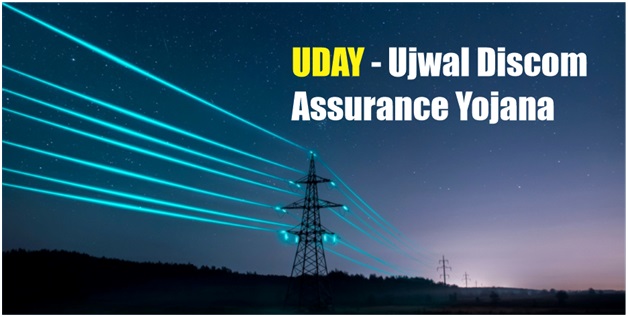
- 05 Aug 2023
Why in the News?
The Comptroller and Auditor General of India (CAG) in its report on Compliance Audit for the year ended March 2021 said that the main objective of the financial and operational turnaround of the Maharashtra State Electricity Distribution Company (MSEDCL) was not achieved in spite of implementing Ujwal DISCOM Assurance Yojana (UDAY) scheme.
What was the News Regarding CAG's Report for Ujwal DISCOM Assurance Yojana (UDAY) scheme?
- MSEDCL failed to reach its targets of reducing AT&C (Aggregate Technical and Commercial) losses to the desired level.
- On the contrary, AT&C losses for MSEDCL increased from 16.94% in 2018-19 to 20.73% in 2020-21.
- The primary reasons for this increase were poor collection, especially from agricultural consumers and various State Government departments.
- Despite implementing the UDAY scheme, the main objectives of achieving financial and operational turnaround for MahaVitaran were not accomplished.
- The Government of Maharashtra should prioritize clearing all electricity dues owed by departments and local bodies to MahaVitaran within a specified timeframe.
- To improve the situation, MahaVitaran should swiftly complete DT (Direct Connected) metering and feeder segregation, aiming to reduce AT&C losses to 15% by enhancing billing and collection efficiency.
About UDAY Scheme:
- The UDAY Scheme, introduced by the Government of India's Ministry of Power in 2015, aims to assist financially struggling Power Distribution Companies (DISCOMs) owned by state governments.
- It serves as a debt restructuring plan, enhancing the operational efficiency of DISCOMs.
- State participation in UDAY is optional.
- States joining the scheme agree to take on 75% of their respective DISCOMs' debts, while the remaining 25% is converted into bonds issued to the DISCOMs.
- As an incentive, participating states receive additional priority funding for various schemes, such as Deen Dayal Upadhyaya Gram Jyoti Yojana (DDUGJY) and Integrated Power Development Scheme (IPDS).
- The primary goal of UDAY is to provide accessible and affordable 24x7 electricity to all citizens.
- It targets revenue-side and cost-side efficiency, initiating reforms in power generation, transmission, distribution, coal, and energy efficiency.
- Initially planned for four years until 2019, the scheme offered a revival package for electricity distribution companies.
- Its success led to the introduction of 'UDAY 2.0' under the Union Budget 2020-21 to further build upon its achievements.
The Primary Objectives of the UDAY Scheme are as follows:
- AT&C Loss Reduction: Target to decrease the aggregate technical & commercial (AT&C) losses from approximately 22% to 15% by the year 2018-19.
- Enhanced Operational Efficiency: Achieve improved operational efficiency through mandatory smart metering, transformer upgrades, and meter enhancements.
- Energy Efficiency Measures: Implement energy efficiency measures, including the promotion of energy-efficient LED bulbs and other energy-saving initiatives.
- Power Sector Cost Reduction: Reduce power costs, interest burden, and power losses in the distribution sector.
- State Participation Encouragement: Encourage active participation of states in the scheme by offering incentives to performing states.
Additionally, the UDAY Scheme offers the following advantages:
- Increased Domestic Coal Supply: Ensure increased supply of domestic coal to power generation companies.
- Rationalized Coal Prices: Implement measures to rationalize coal prices for improved affordability.
- Faster Interstate Transmission Lines: Expedite the completion of interstate transmission lines for enhanced power distribution.
- Transparent Competitive Bidding: Facilitate power purchase through transparent competitive bidding processes.
- Overall, the UDAY Scheme seeks to address various aspects of the power sector to enhance efficiency, reduce losses, and promote sustainable growth in the energy distribution and consumption landscape.
What is the Need for UDAY Scheme?
- Financial Strain: DISCOMs in India are burdened with losses and substantial outstanding debt due to supplying electricity at tariffs below the cost of production.
- Affordability and Quality of Life: The financial distress of DISCOMs hampers their ability to provide adequate power at affordable rates, impacting the quality of life for citizens and hindering overall economic growth and development.
- Distribution Inefficiencies: Inefficient power distribution, including significant transmission and distribution losses, further exacerbates the financial challenges faced by DISCOMs, leading to heavy borrowing from banks to sustain their operations.
- Mounting Debts and Losses: Accumulated losses and a massive debt burden of approximately Rs. 2.75 lakh crore from 2011-12 to 2014-15 necessitated a government intervention to develop a financial scheme that would assist DISCOMs and address their transmission losses.
The Challenges Confronting the UDAY Scheme are as follows:
- Persistently High AT&C Losses: Some states continue to grapple with high AT&C losses, with certain regions reporting losses exceeding 40%. Only a limited number of states, such as TN, Kerala, Gujarat, etc., have managed to reduce losses to less than 15%.
- Impact of Rising Renewable Energy (RE) Share: The increasing penetration of renewable energy in the distribution system is displacing low-cost coal, leading to a rise in the average cost of supply for DISCOMs.
- Unprofitable Bonds: UDAY bonds issued have not yielded substantial profits, resulting in considerable losses of up to 6,000 crores for banks and financial institutions that provided the funds.
- Strained State Finances: Placing the responsibility on states to handle the situation has added pressure to their finances, further straining their financial stability.
The Accomplishments of the UDAY Scheme are as follows:
- Extensive State Participation: The UDAY Scheme witnessed significant participation from numerous states, resulting in improved liquidity conditions for DISCOMs and enhanced power supply.
- Reduction in AT&C Losses: Participating states successfully achieved a reduction in aggregate technical & commercial (AT&C) losses or distribution losses, contributing to the overall efficiency improvement in the power sector.
Mains Question:
- Assess the UDAY Scheme's impact on India's power sector reforms, considering challenges like high AT&C losses and increasing renewable energy share. Recommend strategies to address these issues. (15M)
India's Digital Personal Data Protection Bill 2023 (TOI)

- 04 Aug 2023
- The central government will notify countries where data fiduciaries may transfer personal data.
- Such transfers will be subject to prescribed terms and conditions.
- Exemptions:
- Certain specified cases will be exempt from certain rights of data principals and obligations of data fiduciaries, excluding data security. These cases include:
- Prevention and investigation of offenses.
- Enforcement of legal rights or claims.
- The central government may, through notification, exempt certain activities from Bill's application, such as
- Processing by government entities for national security and public order.
- Data processing for research, archiving, or statistical purposes.
- Data Protection Board of India:
- The central government will establish the Data Protection Board of India.
- Key functions of the Board include:
- Monitoring compliance and imposing penalties.
- Directing data fiduciaries to take necessary measures in the event of a data breach.
- Addressing grievances made by affected individuals.
- Penalties:
- The Bill outlines penalties for various offenses, including
- Fines of up to Rs 200 crore for non-compliance with obligations related to children's data.
- Fines of up to Rs 250 crore for failure to implement adequate security measures to prevent data breaches.
Importance of the Digital Personal Data Protection Bill, 2023:
- The Digital Personal Data Protection Bill 2023 holds significant value as it aims to ensure the safety and privacy of users’ personal data while granting them greater control over its portability. The bill sets forth stringent measures and norms that will hold big corporations and consumers accountable, imposing substantial fines on those who fail to comply.
- The primary objective of the bill is to enhance the accountability of entities, including internet companies, mobile apps, and businesses, in their collection, storage, and processing of citizens' data, safeguarding the citizens' "Right to Privacy." Once approved, various public and private entities will be obligated to obtain explicit consent from users before collecting and processing their data.
- This landmark legislation signifies a major step towards valuing and protecting the privacy of each consumer, ensuring that their personal data is handled with utmost care and responsibility, creating a safer and more secure digital environment for all.
Concerns regarding the Digital Personal Data Protection Bill, 2023, include several contentious issues:
- The government and its agencies are granted wide-ranging exemptions.
- The powers of the data protection board might be diluted.
- The proposed amendment to the Right to Information Act, of 2005, is causing worries, particularly due to the removal of the public interest caveat that could restrict sharing of government officials' personal information.
- The bill overrides Section 43A of the Information Technology Act, 2000, which mandates compensation for mishandling user data by companies. The new compensation mechanism has been questioned, as it may impact users' ability to seek adequate redress.
- Addressing these concerns is essential to ensure a comprehensive and balanced approach to safeguarding personal data in the digital realm.
What are Data Privacy Regulations in Other Countries?
- Approximately 70% of countries worldwide have implemented data protection legislation, as reported by the United Nations trade agency UNCTAD.
- The EU's General Data Protection Regulation (GDPR), enforced in 2018, is considered the most stringent privacy and security law globally and serves as a benchmark for data protection regulations.
- Several countries, such as China and Vietnam, have recently strengthened their laws concerning the cross-border transfer of personal data to enhance data privacy.
- In 2018, Australia passed a bill granting police access to encrypted data.
In conclusion, the Digital Personal Data Protection Bill, 2023, offers extensive rights to individuals, granting them enhanced visibility, awareness, decision-making autonomy, and control over their data. It imposes strict obligations on companies to adhere to individual rights and establishes robust redressal mechanisms, backed by significant penalties for non-compliance.
Moreover, the Bill reinforces the landmark judgment of the Supreme Court in the case of Justice K. S. Puttaswamy (Retd) Vs Union of India (2017). In this judgment, a nine-judge bench unanimously recognized the constitutionally protected fundamental right to privacy for Indians, affirming that privacy is an intrinsic aspect of life and liberty under Article 21 of the Constitution. The Digital Personal Data Protection Bill, 2023, is a crucial step towards upholding this fundamental right and ensuring better protection of personal data in the digital age.
Mains Question:
- Examine the provisions and significance of the Digital Personal Data Protection Bill, 2023, comparing it to global data privacy regulations and its alignment with the Indian Supreme Court's right to privacy ruling. (15M)
India is in Dire need of Police Reforms (LiveMint)
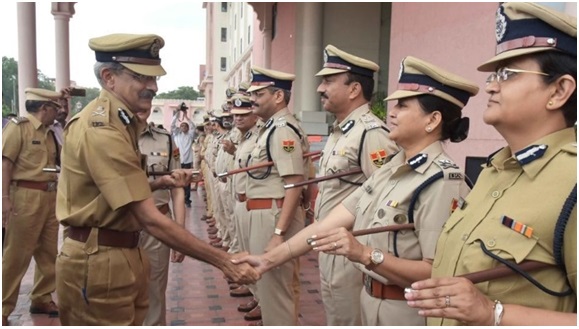
- 03 Aug 2023
Why in the News?
The outbreak of communal violence in the Delhi region raises concerns over the role of law enforcement; police forces need structural autonomy and revised incentives.
About Police and Policing Framework in India:
Police forces play a crucial role in upholding and enforcing laws, investigating crimes, and providing security to the nation's people. Given India's large population, well-equipped police forces with adequate personnel, weaponry, forensic, communication, and transport support are essential for effective performance.
The existing legal and institutional framework for police matters in India was inherited from the British, but it lacks accountability in establishing a responsible police force. Despite multiple reform proposals acknowledged by the Government of India and the Supreme Court, comprehensive implementation remains elusive. Consequently, India must revise the legal and institutional framework to advance towards smart policing.
Constitutional and Legal Provisions:
- As per the Constitution of India, 'Police' and 'Public Order' fall under state subjects in the Seventh Schedule, granting each state its own police force.
- The central government is also permitted to maintain its police forces to assist states in maintaining law and order.
- The foundational framework for policing in India was established through the Police Act, of 1861, during the pre-independence era.
- Additionally, several other laws and regulations, such as the Criminal Procedure Code (CrPC), Indian Penal Code (IPC), Evidence Act, and state-specific laws, govern the functioning of the police in India.
Issues and challenges in Police Forces:
- Colonial Legacy: The current police system in India is still rooted in colonial-era laws, with past misuse of police as a tool to suppress dissent, which sometimes continues in the present government.
- Shortage of Police Personnel: Despite a sanctioned strength of 181 police per lakh persons in 2016, the actual strength was only 137 police, well below the United Nations' recommended standard of 222 police per lakh persons, leading to overburdened police personnel.
- Custodial Death: Instances of custodial death due to torture or pressure in police/judicial custody remain a concern, despite the Supreme Court's guidelines against it.
- Inadequate Infrastructure: Modern policing requires robust communication support, modern weapons, and high mobility, but funds allocated for police infrastructure often face underutilization.
- Lack of Torture Law: While India has signed the "United Nations Convention Against Torture," a specific domestic law against torture is yet to be enacted.
- Political Interference: Political interference hampers police officers' ability to perform their duties effectively, with insufficient tenure and posting security for higher-ranking officers.
- Promotion and Working Conditions: Qualifications and training for police personnel, especially at lower levels, need improvement. Verbal abuse from superiors and inhumane working conditions for lower ranks impact their relationship with the public negatively.
Significance of Police Reforms:
- Police-Population Ratio: India's low ratio of 120 police per 100,000 people, compared to the global average of 270, results in inadequately equipped and politically oriented police, posing a security challenge for its citizens.
- Tackling Corruption: A significant rise in vigilance inquiries against police personnel in 2016 and a decrease in corruption from 66% (2014) to 34% (2015) highlight the need for reforms to address corruption within the police force.
- Adapting to Changing Crime Patterns: Evolving social and technological changes, driven by the internet and social media, have transformed crime, necessitating reforms to effectively combat lawlessness and global terrorism.
- Ensuring Inclusivity: Underrepresentation of women and marginalized castes can lead to insensitivity towards these groups, highlighting the importance of reforms to promote inclusivity within the police force.
- Addressing Caste-Based Violence: Reforms are crucial to tackling escalating violence arising from caste conflicts, including recent Dalit uprisings and farmers' issues across the country.
Various Committees for Police Reforms:
- Gore Committee on Police Training (1971-73): Reviewed police training from constabulary to IPS officers.
- National Police Commission (1977): Produced eight Reports on various aspects of police administration.
- Ribeiro Committee (1998): Recommended setting up Police Performance and Accountability Commissions at the state level and a District Complaints Authority, and replacing the Police Act, of 1861.
- Padmanabhaiah Committee (2000): Studied police force recruitment, training, duties, investigations, and prosecution.
- Soli Sorabjee Committee (2005).
- Vohra Committee Report: Exposed the nexus between criminals, politicians, and government officials, suggesting the establishment of an institution to address the issue.
Way Forward for Police Reforms: Seven Supreme Court Directives
- Curbing Political Control: Ensure state governments do not exert undue influence or pressure on the police.
- Merit-Based Appointments: Implement a transparent and merit-based process for appointing the Director-General of Police, ensuring a minimum tenure of 2 years.
- Tenure Stability: Provide a minimum tenure of 2 years to police officers handling operational duties, including district Superintendents of Police and Station House Officers.
- Separation of Functions: Separate the roles of investigation and law enforcement to enhance efficiency and transparency.
- Police Establishment Board: Establish a Police Establishment Board to address transfers, postings, promotions, and service-related matters for officers up to the rank of Deputy Superintendent of Police.
- State and District Police Complaints Authority: Set up independent Police Complaints Authorities at the state and district levels to address serious misconduct complaints against police officers.
- National Security Commission: Establish a National Security Commission at the union level to facilitate the selection and placement of chiefs of Central Police Organizations with a minimum tenure of 2 years.
Preserving tribal culture: Odisha’s Special Development Councils model is worth emulating (The Hindu)
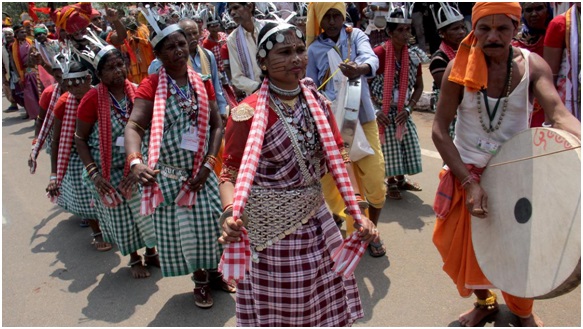
- 02 Aug 2023
Why in the News?
In Odisha's development model driven by the 5T principles (transparency, technology, teamwork, time limit, and transformation), the vision of inclusive growth and community-led development goes beyond being a mere idea; it stands as an actionable strategy with tangible outcomes.
Tribal population in India:
- India encompasses a significant tribal population of 8.6%, possessing a vast repository of indigenous knowledge that holds the potential to offer sustainable solutions through recognition, adoption, and integration into mainstream practices.
- As per Article 342 of the Indian Constitution, the President has the authority to specify, with respect to any State or Union territory, the tribes, tribal communities, parts of, or groups within tribes or tribal communities as Scheduled Tribes.
Tribal Culture: A Glimpse
- Communal Bond: Many tribal communities in India embrace a strong sense of communal living, where resources are shared, and decisions are collectively made within close-knit communities.
- Connection with Nature: Tribals deeply connect with nature, embracing traditional beliefs and practices centered around forests and animals.
- Self-Sufficiency: A tribe embodies self-reliance, forming relatively closed societies where their self-sufficiency pursuits define their openness to the outside world.
- Spiritual Traditions: Tribals nurture distinct spiritual beliefs, often venerating ancestors, nature spirits, or deities, adding uniqueness to their cultural tapestry.
- Expressive Artistry: Tribals are celebrated for their exquisite art forms, such as pottery, weaving, and jewelry making. These crafts hold spiritual and cultural significance, passing down through generations.
Tribal Lifestyle and Sustainable Development:
- Harmony with Nature: The tribal lifestyle upholds profound respect for the natural environment, incorporating sustainable practices like using natural materials for housing, food, and medicine, and living in sync with nature's cycles.
- Community-Centric Decision-Making: Their collective decision-making process prioritizes the needs of the entire community, ensuring sustainable and equitable choices.
- Biodiversity Preservation: Tribals actively promote biodiversity by employing traditional agricultural techniques like intercropping and seed saving, as well as safeguarding sacred sites vital for biodiversity conservation.
- Resource Conservation: Sustainable practices involve judicious resource usage, such as rotational farming and allowing forests to regenerate before harvesting timber, ensuring their long-term availability.
- Intergenerational Knowledge Transfer: Passing down knowledge to future generations includes traditional wisdom about the natural environment and sustainable resource management.
- Water Resource Protection: Tribal communities have devised practices to safeguard water resources, guaranteeing their availability for future generations while reducing greenhouse gas emissions.
- Regenerative Agriculture: For centuries, tribal communities have practiced regenerative agriculture, incorporating crop rotation, intercropping, and organic matter to enrich soils and sequester carbon, contributing to climate change mitigation.
- Embracing Renewable Energy: Traditional reliance on renewable energy sources like wind, solar, and hydropower offers a model for expanding and modernizing clean energy solutions for broader communities.
Challenges Confronting Tribal Lifestyles:
- Discrimination: Tribal communities frequently encounter discrimination and bias from the dominant society, leading to restricted access to education, healthcare, and essential services.
- Land Rights: Displacement from ancestral lands due to industrialization and mining has led to the loss of cultural identity and socio-economic marginalization among tribal communities.
- Climate Change and Environmental Degradation: Adverse effects of climate change, such as altered rainfall patterns, more frequent natural disasters, biodiversity loss, deforestation, pollution, and habitat destruction, have severely impacted their traditional livelihoods and ways of life.
- Socioeconomic Marginalization: Limited access to education, healthcare, and economic opportunities has resulted in poverty and social exclusion for many tribal communities.
- Lack of Political Representation: Tribal communities often lack political representation, depriving them of a voice in decision-making processes that directly influence their lives.
- Cultural Assimilation: Pressures to conform to the dominant culture impose a risk of losing traditional knowledge, language, and cultural practices within many tribal communities.
What is Odisha's Special Development Councils (SDCs) Initiative?
- In a momentous stride towards preserving, promoting, and celebrating tribal culture while advancing the trajectory of development, the Odisha government introduced the Special Development Councils (SDCs) initiative in 2017.
- The primary objective is to safeguard the rich culture and heritage of 62 tribes in the State under a unified approach while ensuring continued economic progress in the regions.
- Originally encompassing 9 tribal-dominated districts and benefiting 60 lakh tribal households across 117 blocks, the initiative has now expanded to cover 23 districts, extending its benefits to over 84 lakh tribal individuals.
Government Initiatives for Tribal Culture Conservation:
- National Scheduled Tribes Finance and Development Corporation (NSTFDC): Established in 2001 under the Ministry of Tribal Affairs, NSTFDC aims to uplift Scheduled Tribes economically through concessional financial assistance under various schemes.
- TRIFED's Tribal Initiatives: The government plans to establish 50,000 Van Dhan Vikas Kendras and 3,000 Haat Bazaars, fostering economic opportunities for tribal populations.
- Central Sector Scheme: Supporting Institutional Development & Marketing of Tribal Products/Produce.
- Centrally Sponsored Scheme: Ensuring a sustainable mechanism for Marketing Minor Forest Produce (MFP) through Minimum Support Price (MSP) and developing value chains, providing social safety for MFP gatherers.
- Pradhan Mantri Van Dhan Yojana: A market-linked tribal entrepreneurship development program promoting the formation and strengthening of Tribal Producer Companies through clusters of tribal Self Help Groups (SHGs).
- Scholarships: Government-funded scholarships for pre-matric, post-matric, and overseas education, facilitating educational access for tribal students.
- Support to NSTFDC: Assistance to the National Scheduled Tribes Finance and Development Corporation for further empowerment initiatives.
- Development of Particularly Vulnerable Tribal Groups (PVTGs): Comprehensive support encompassing housing, land distribution, agricultural and animal husbandry development, link road construction, and more.
- Vocational Training in Tribal Areas: Focused on enhancing the skills of ST youth for diverse job opportunities and self-employment, elevating their socio-economic status.
Mains Question:
- Examine the challenges faced by tribal lifestyles and evaluate the effectiveness of government initiatives for tribal culture conservation in improving socio-economic conditions and preserving cultural heritage among tribals. (15M)
